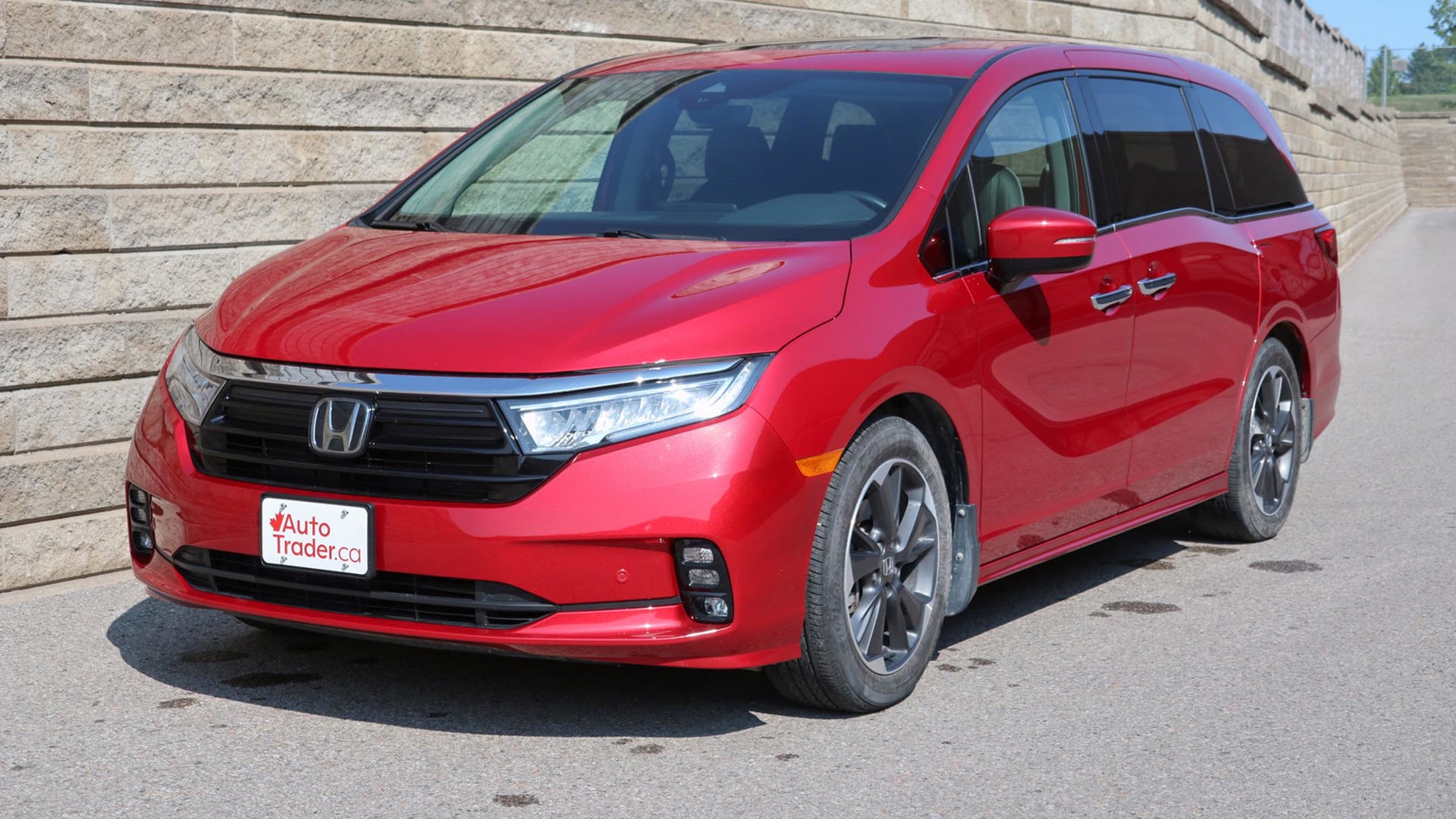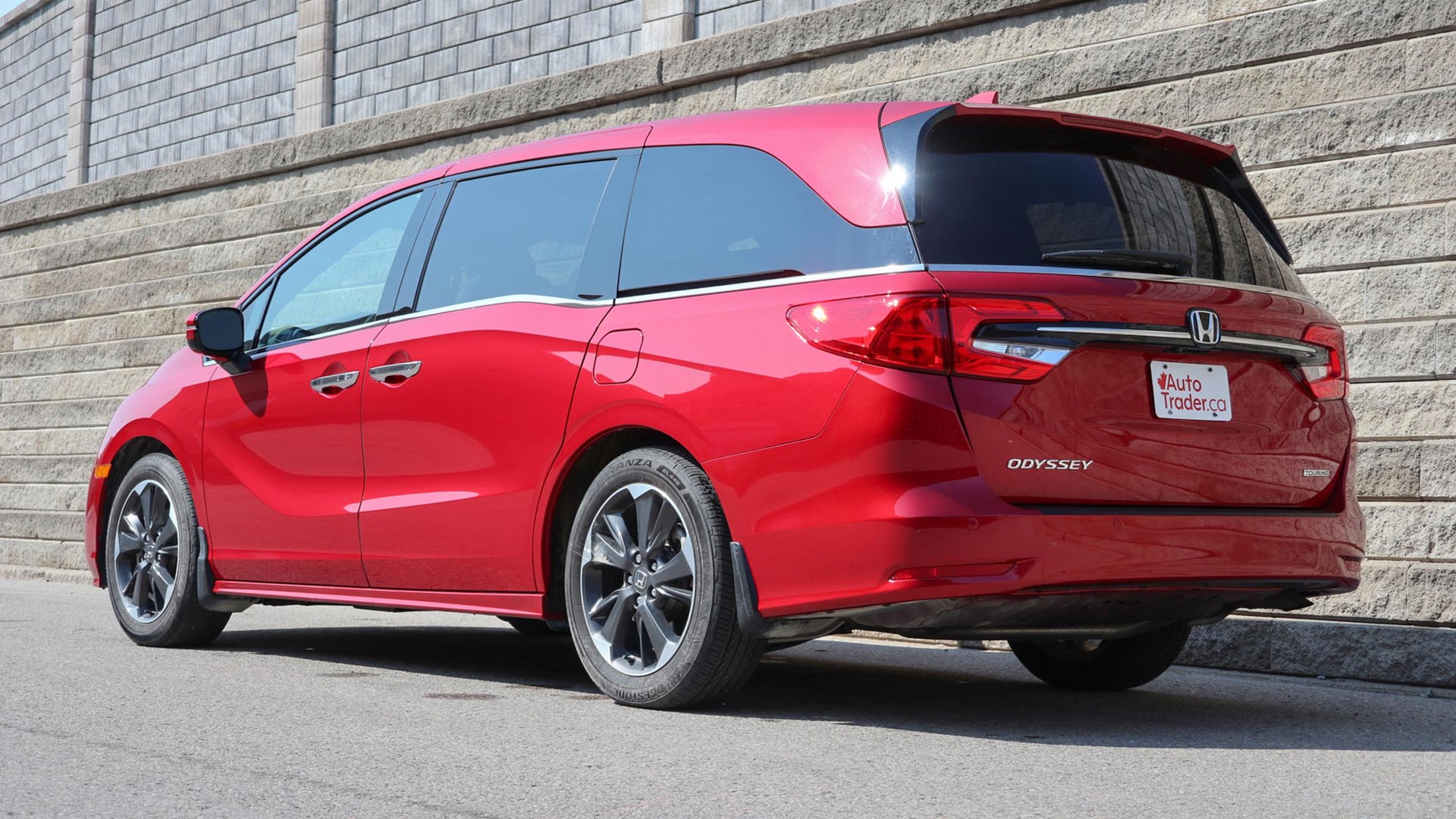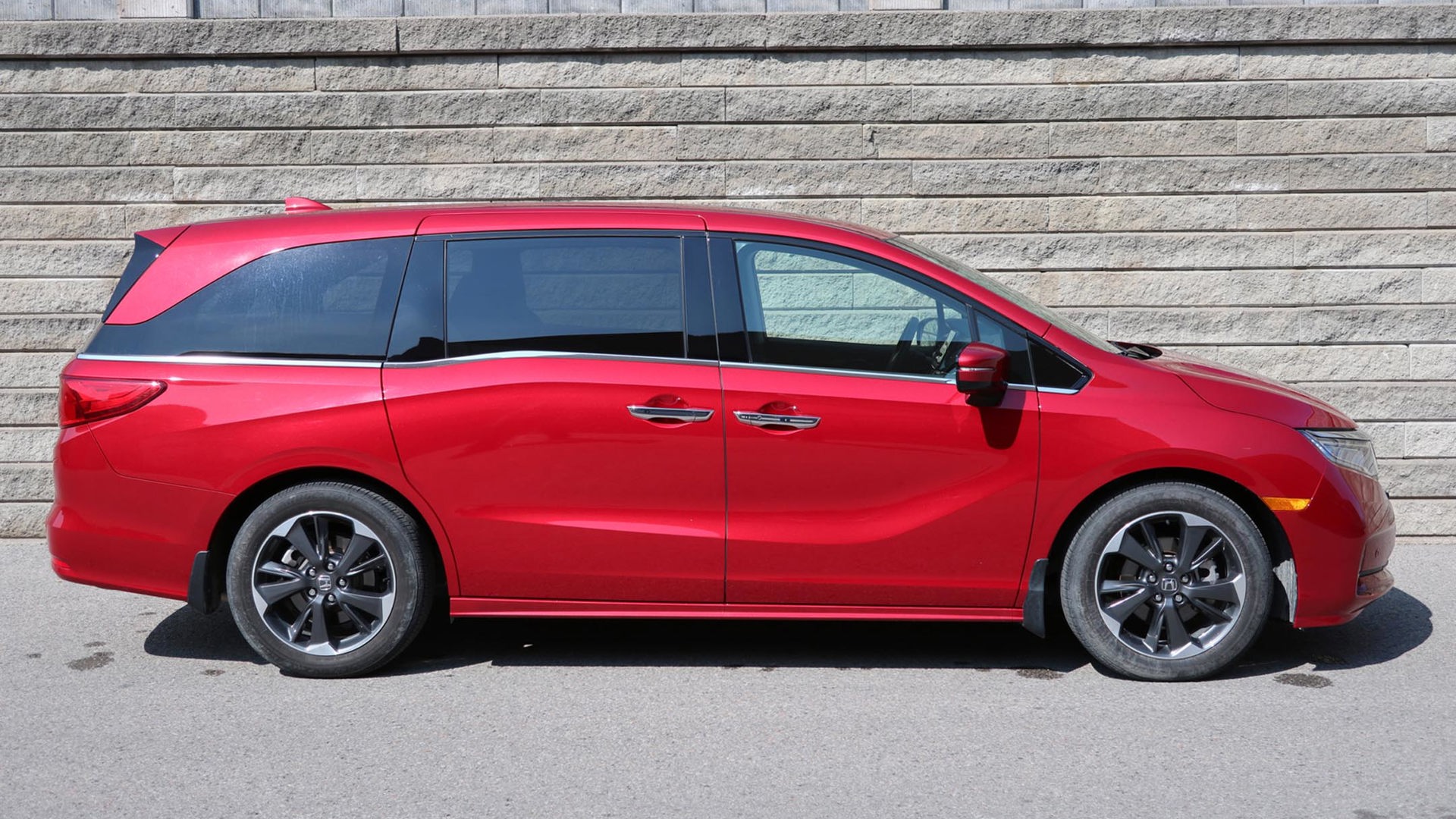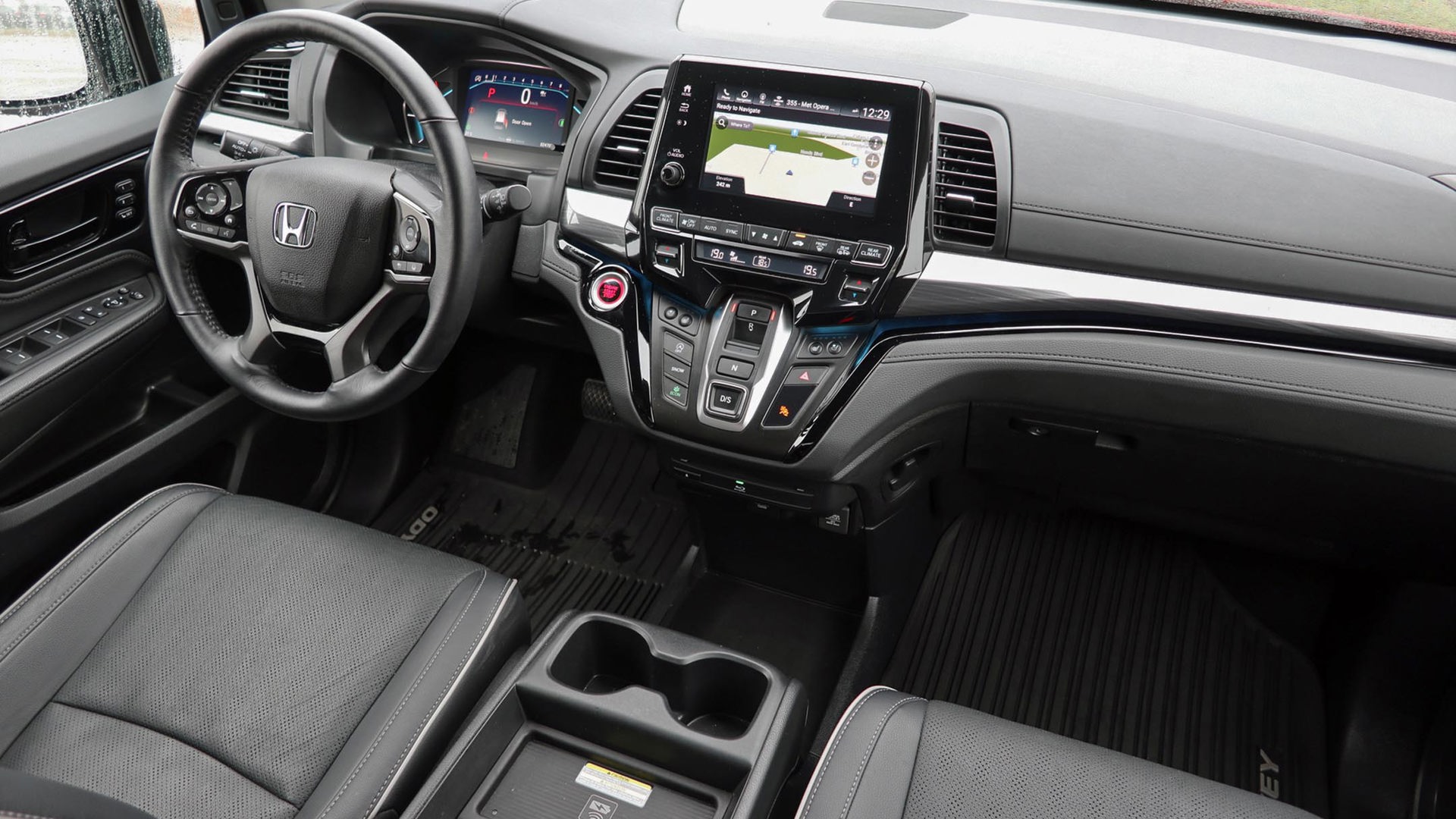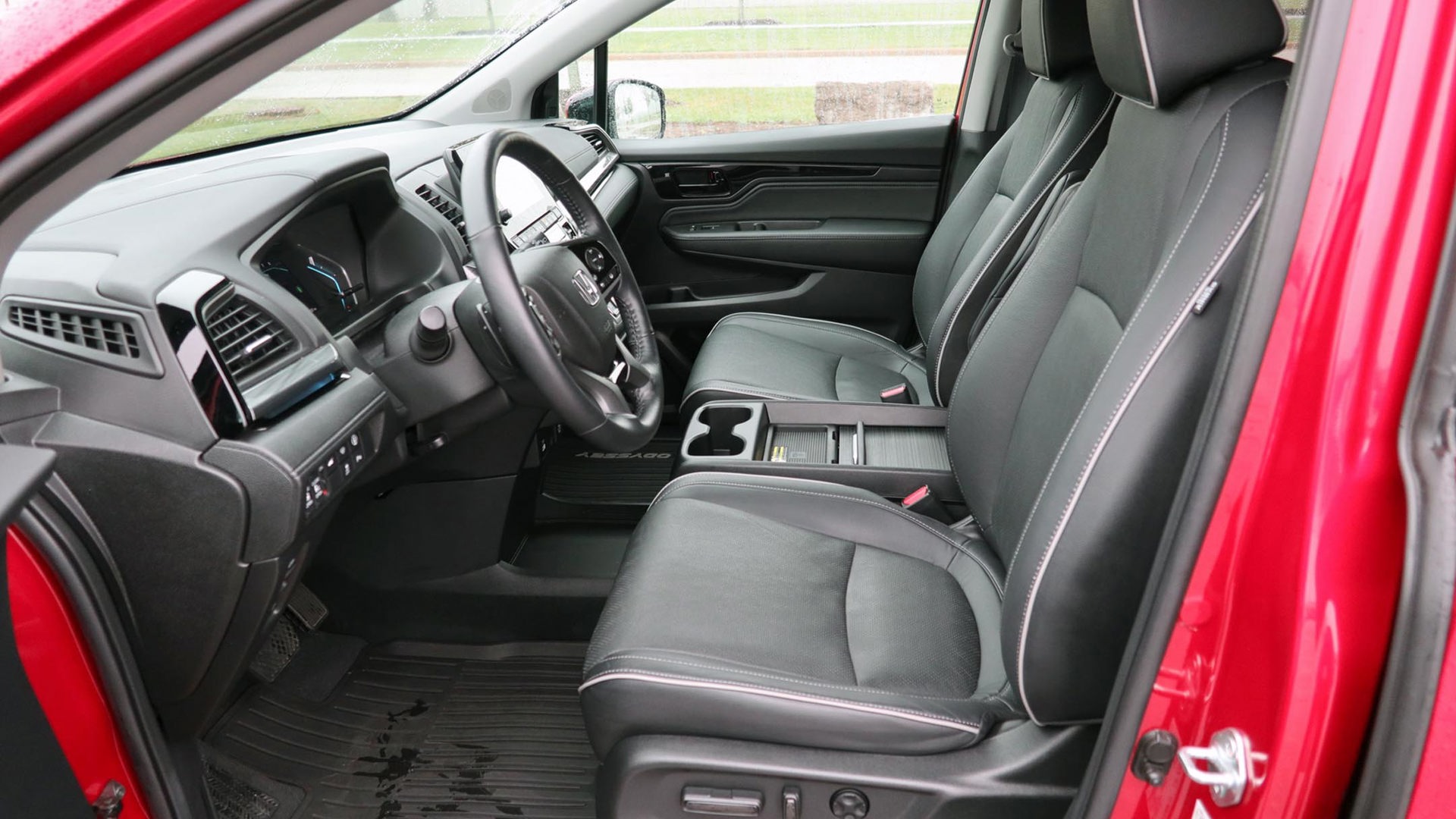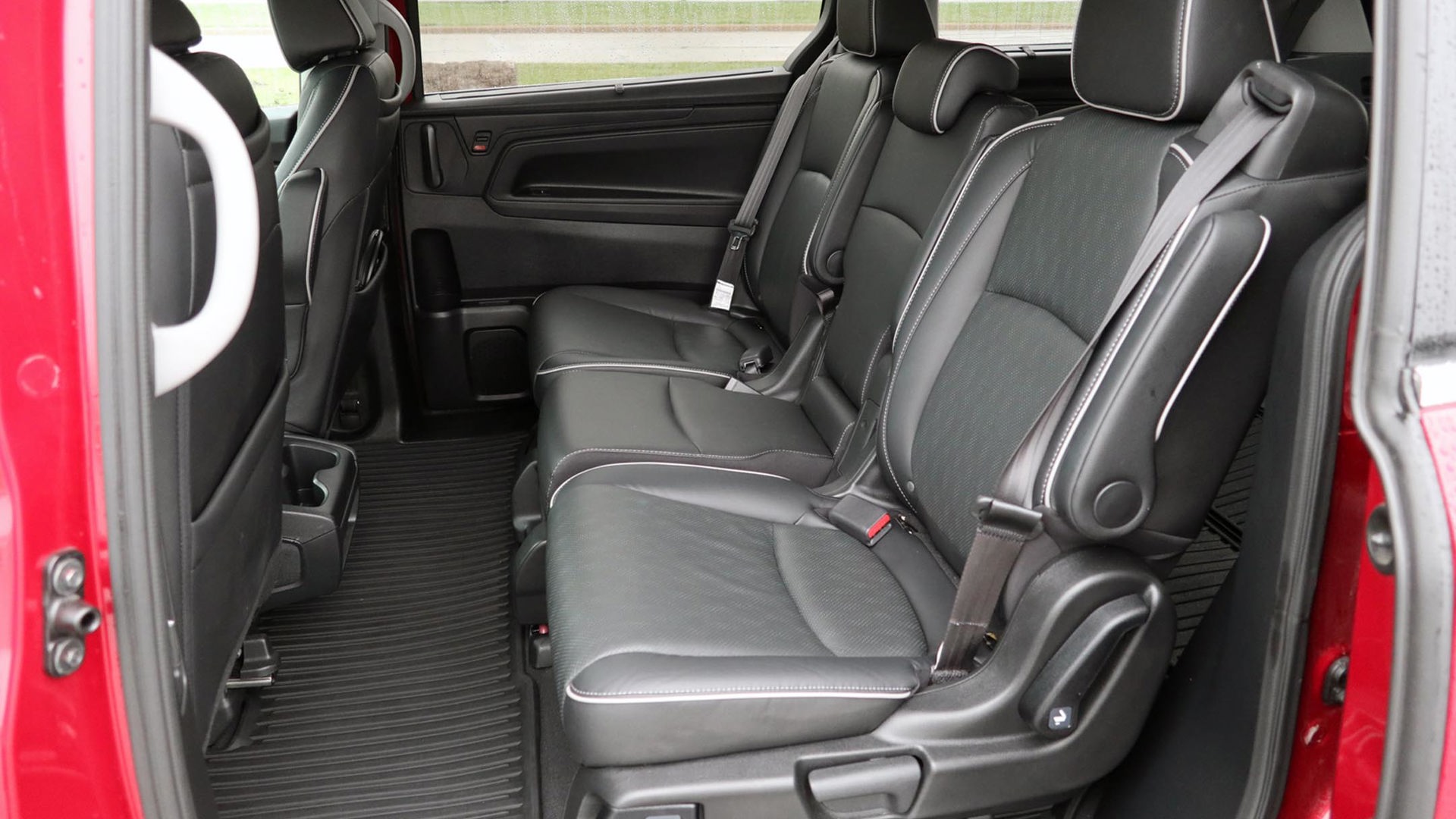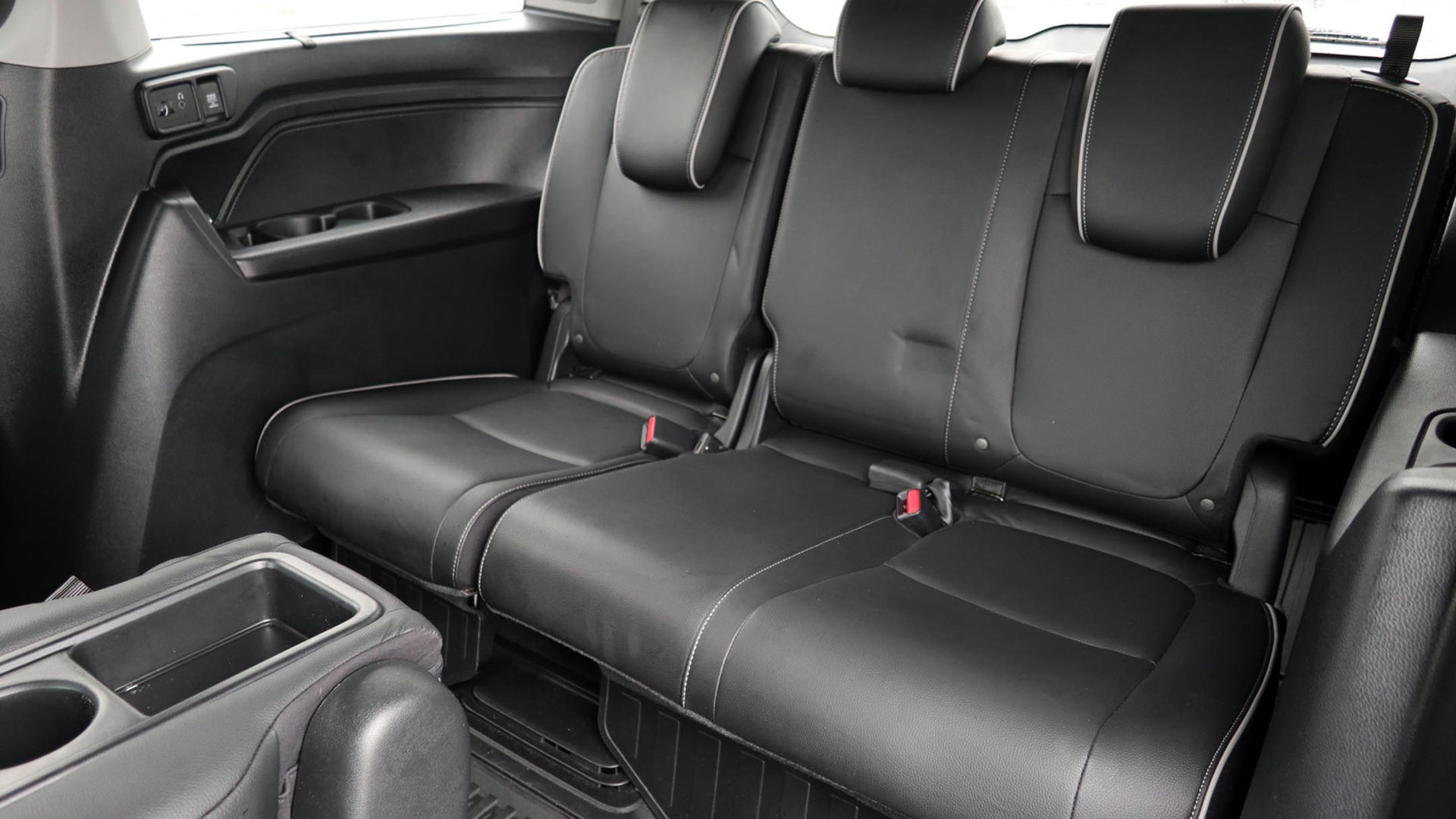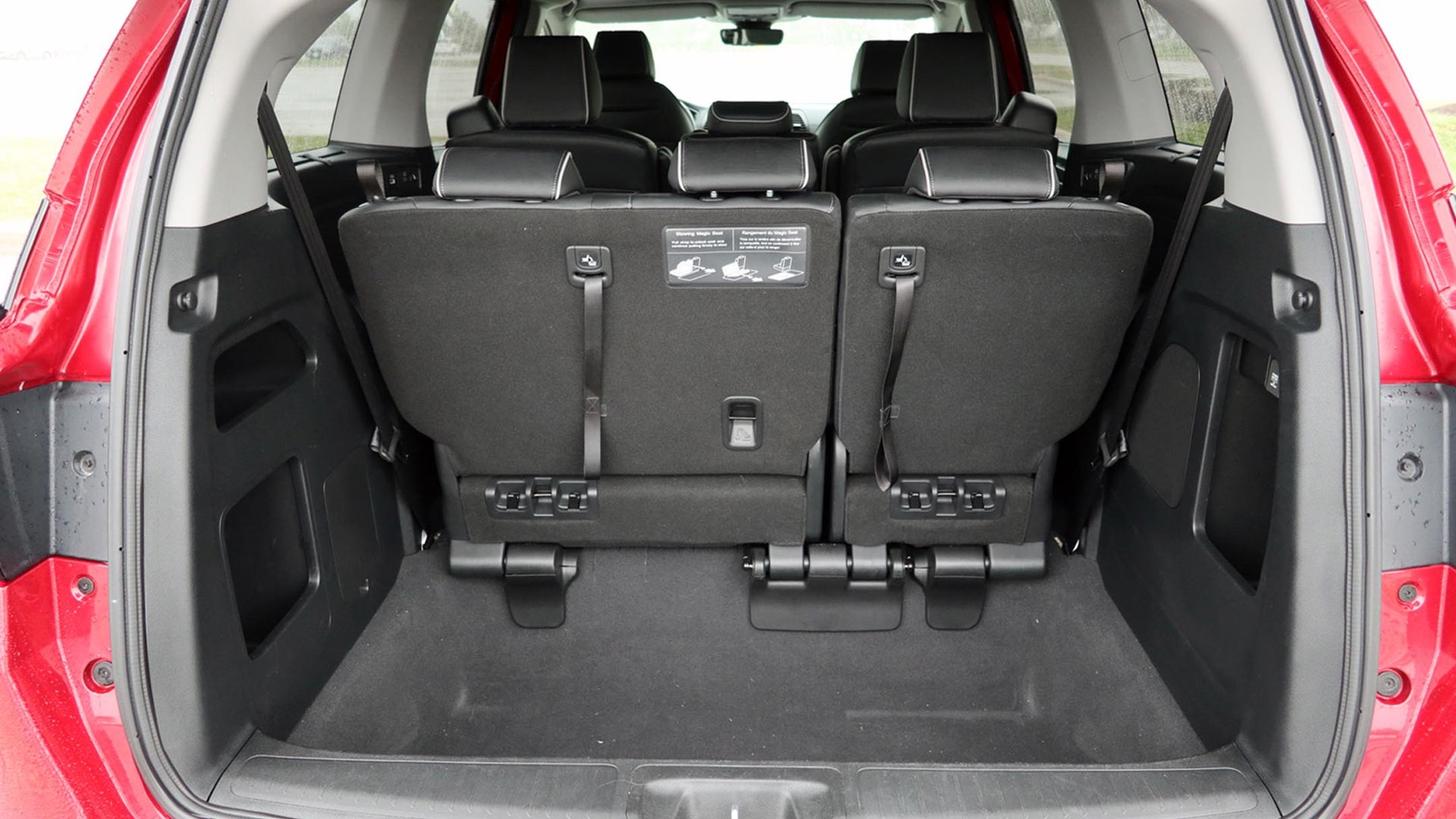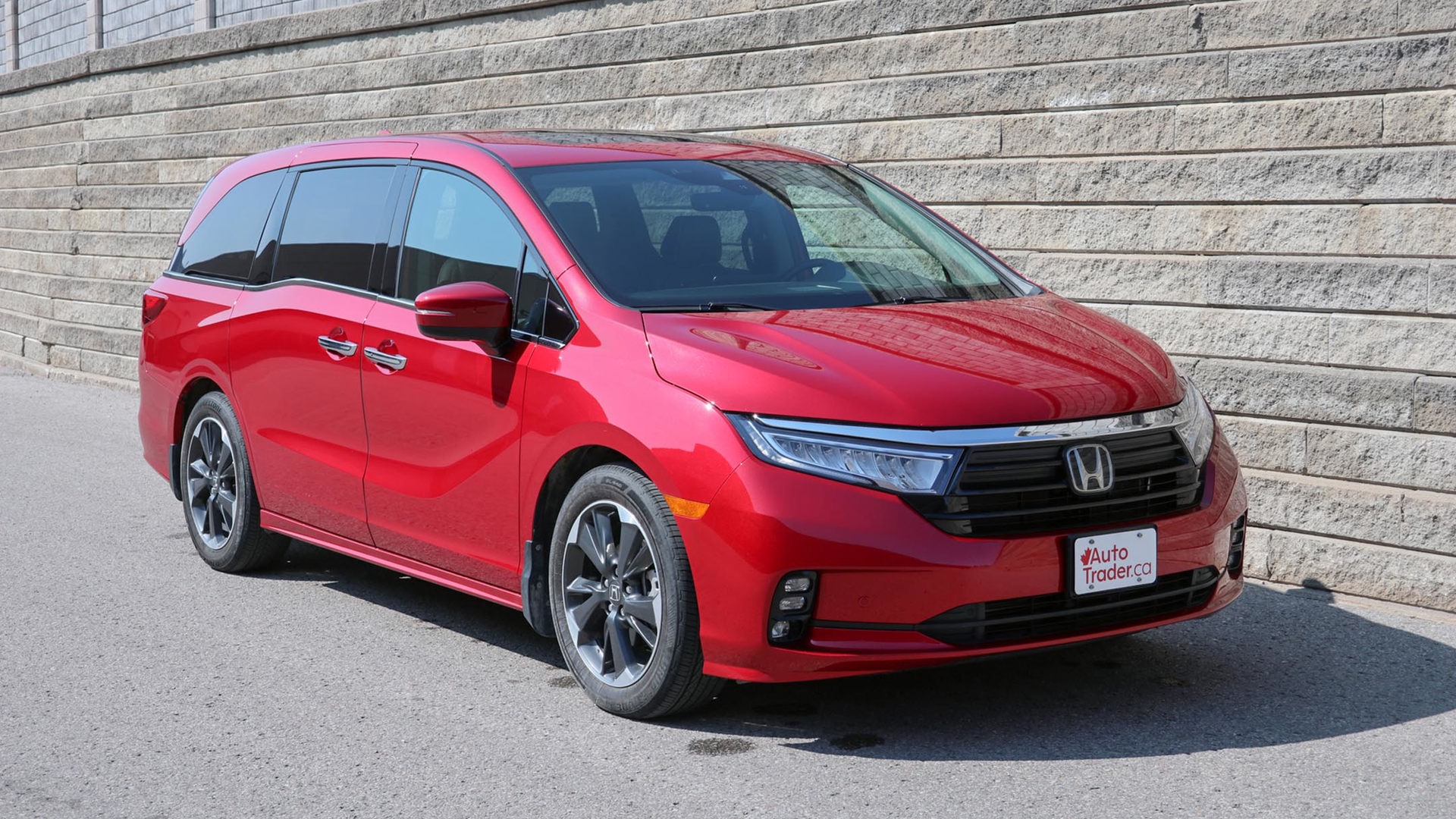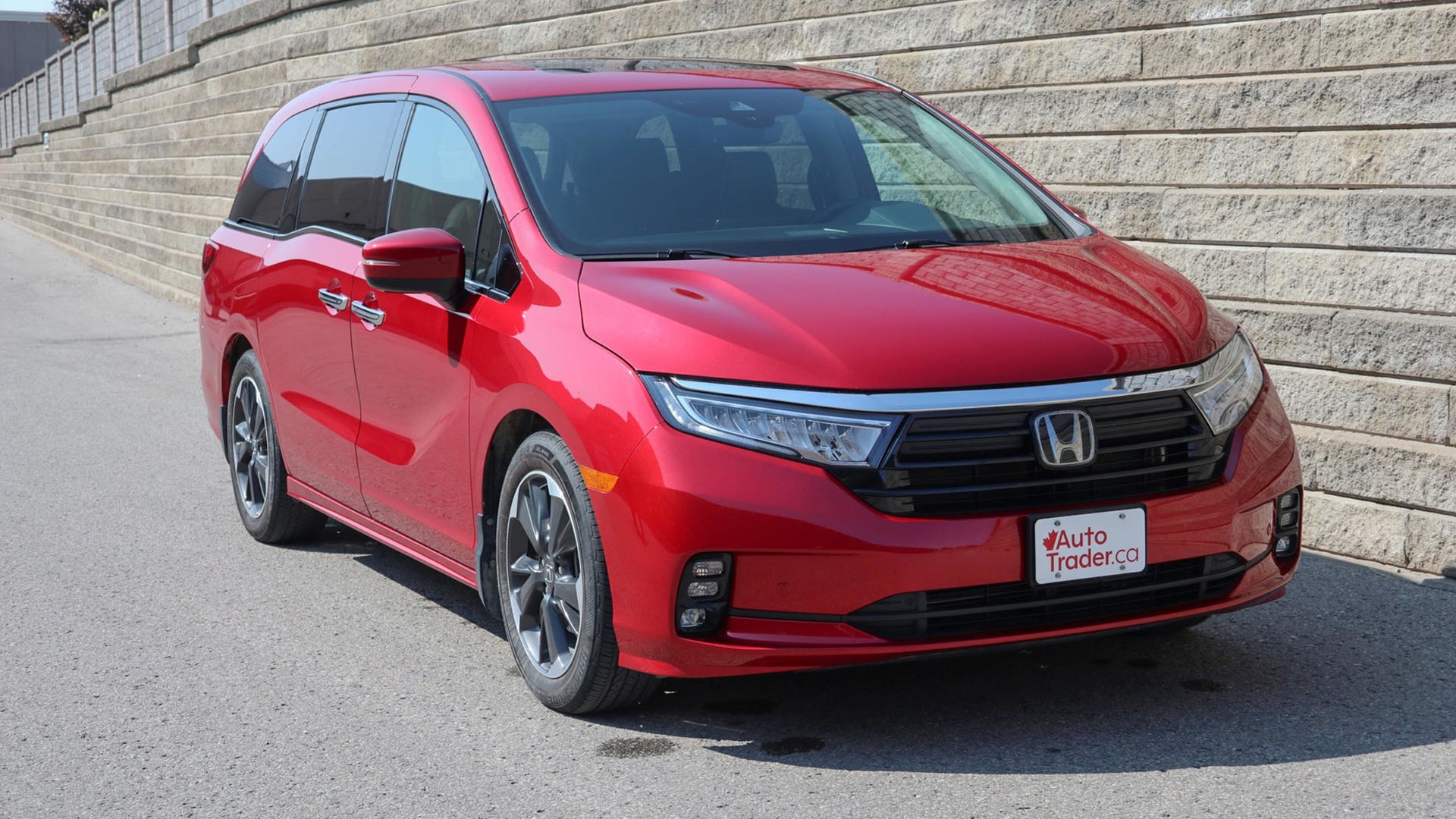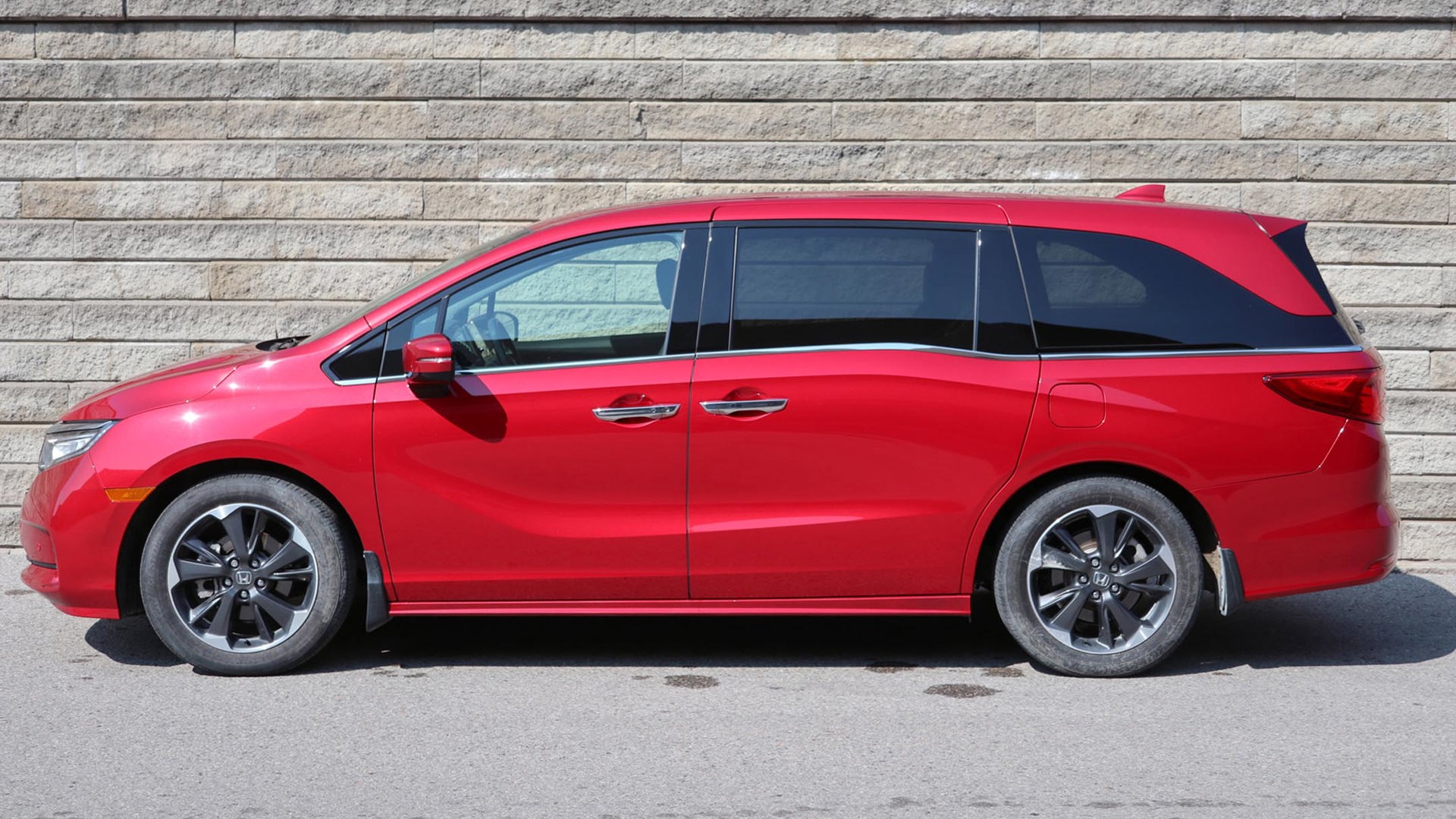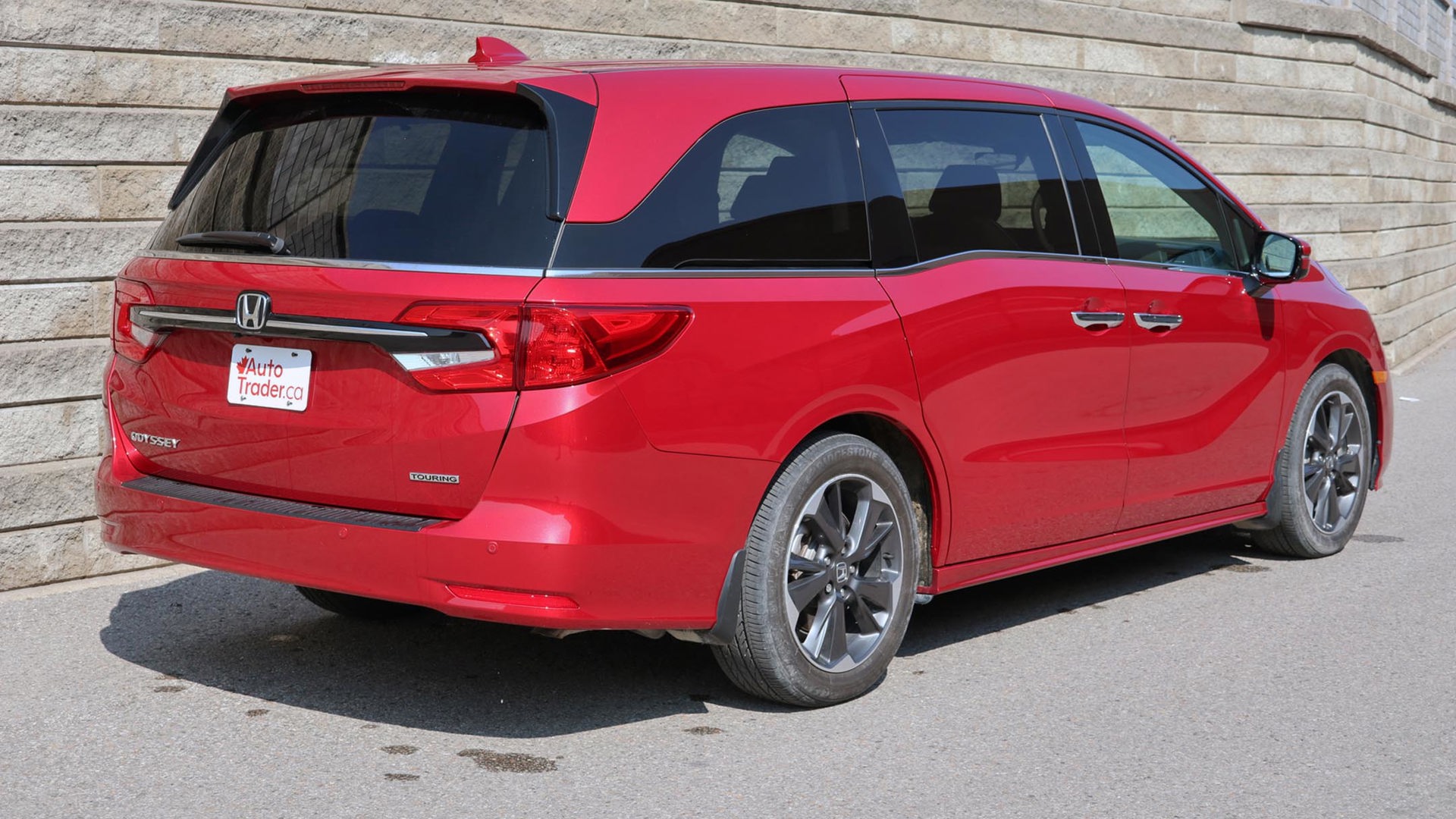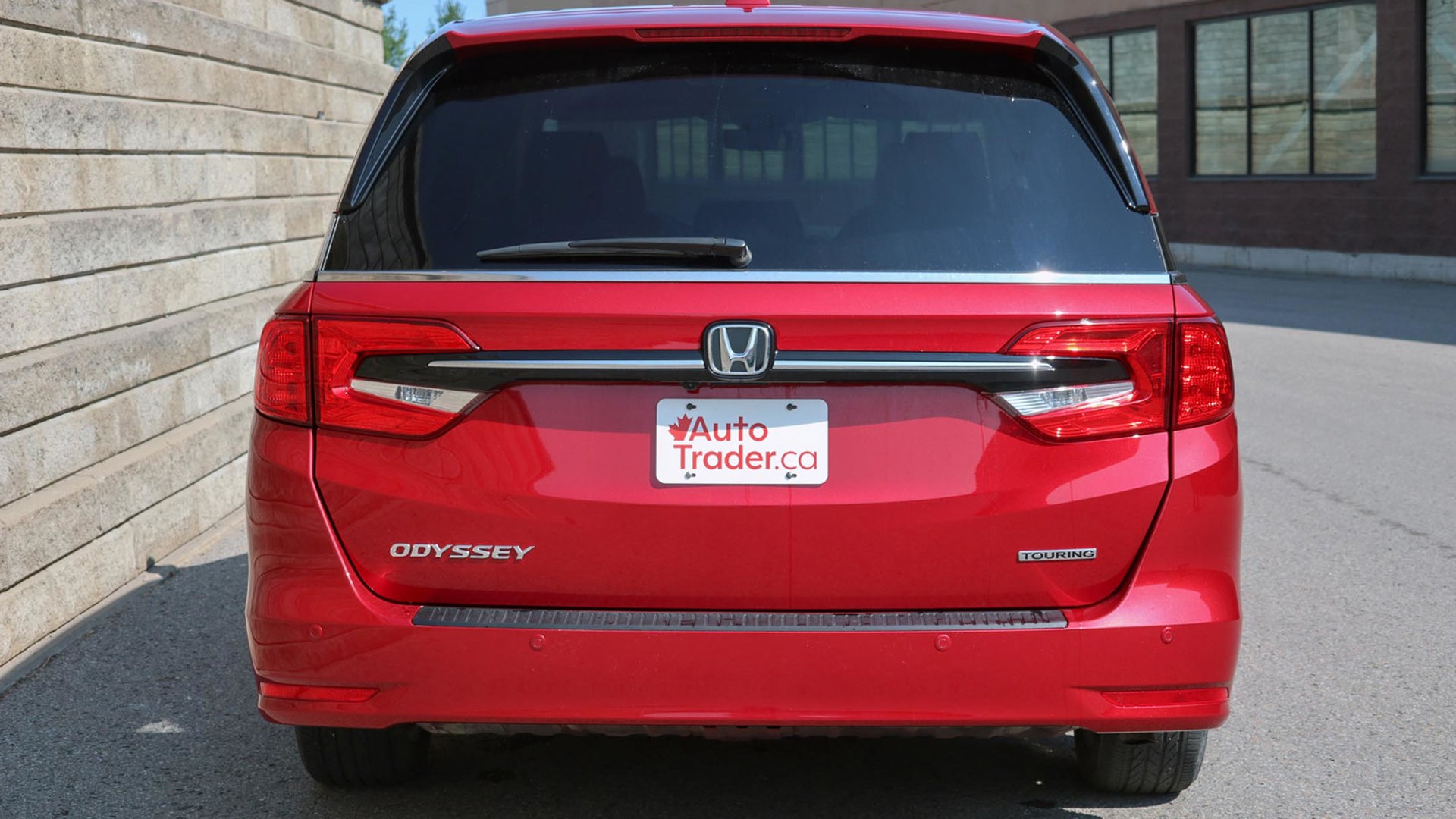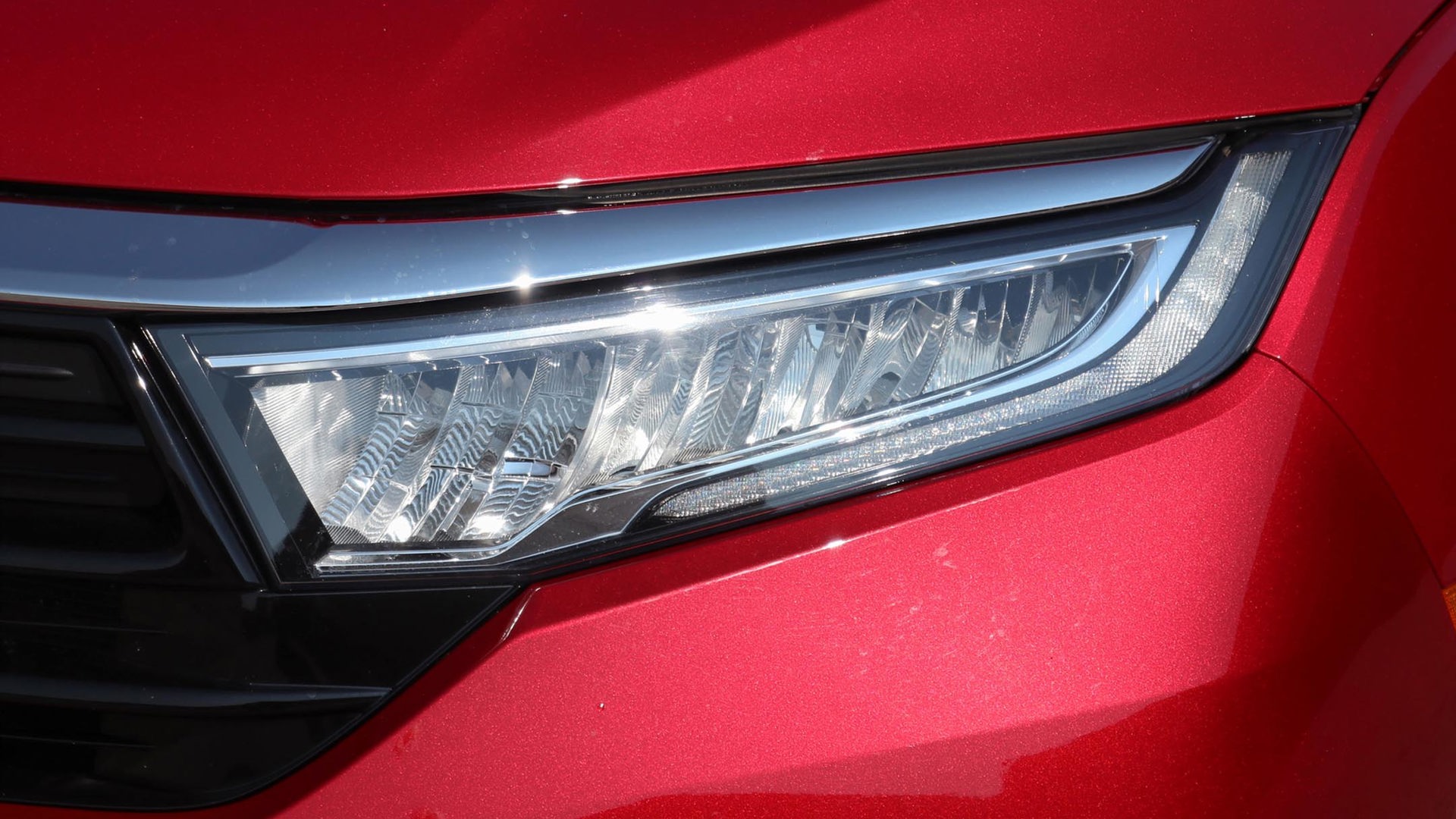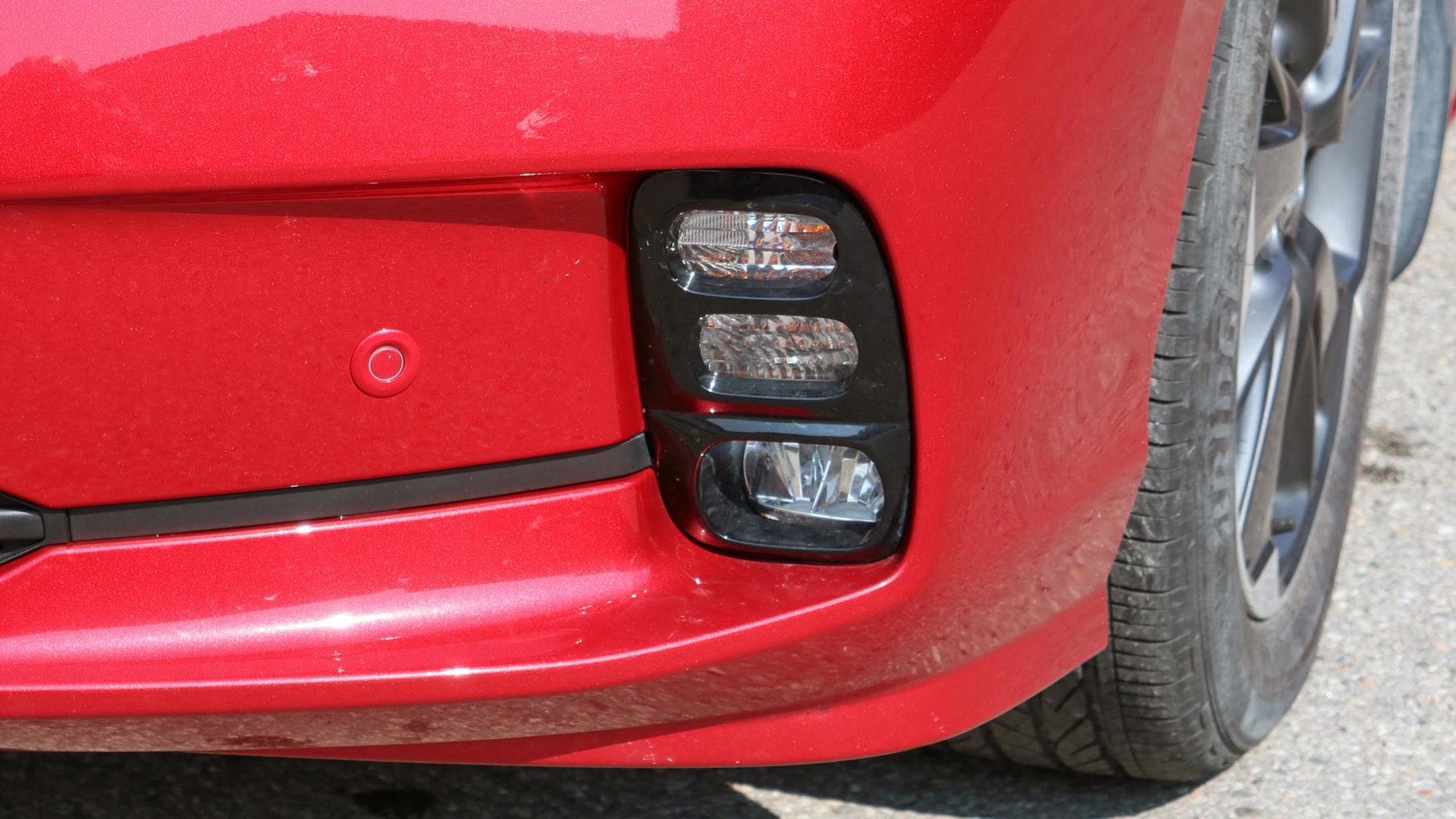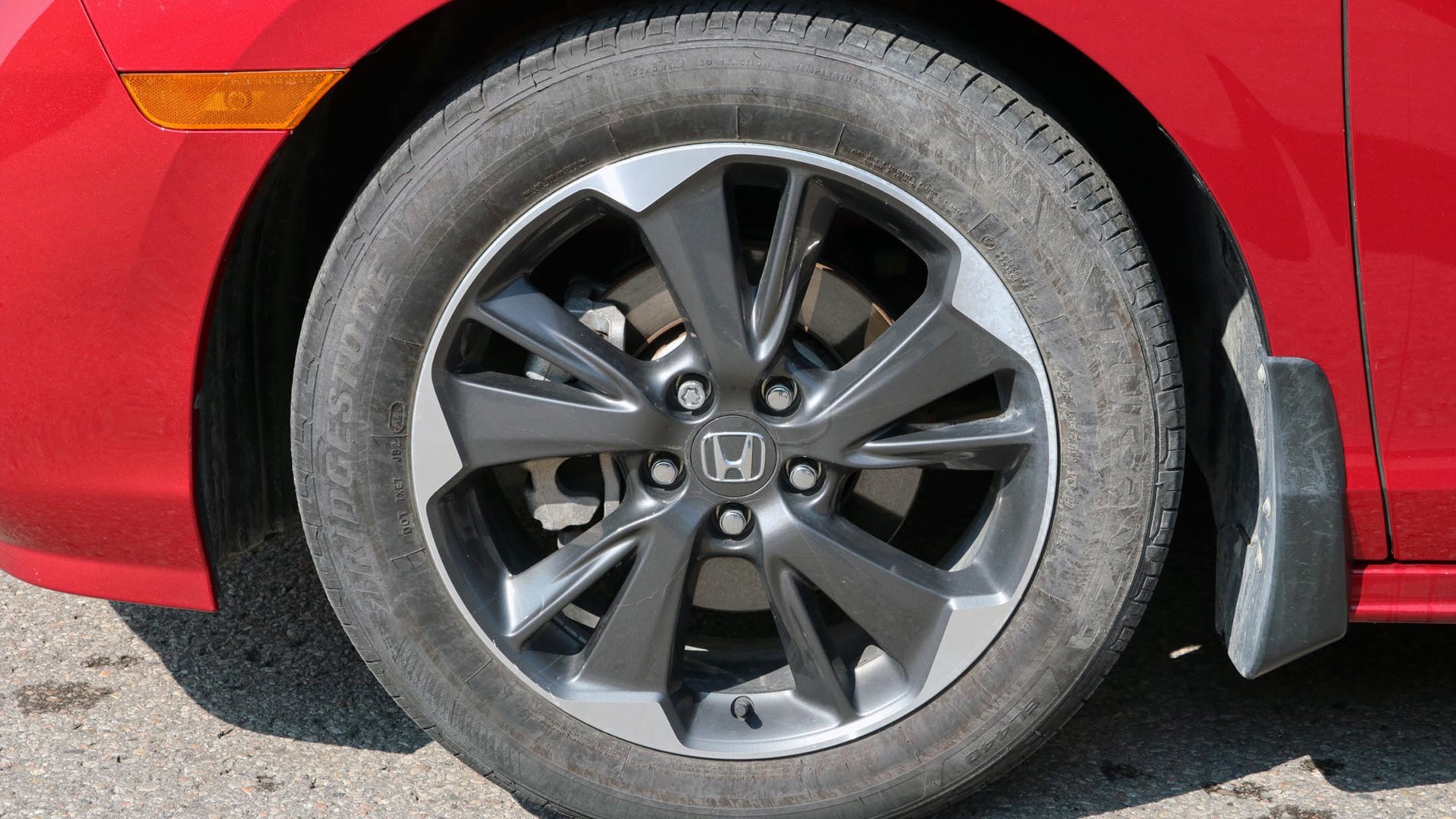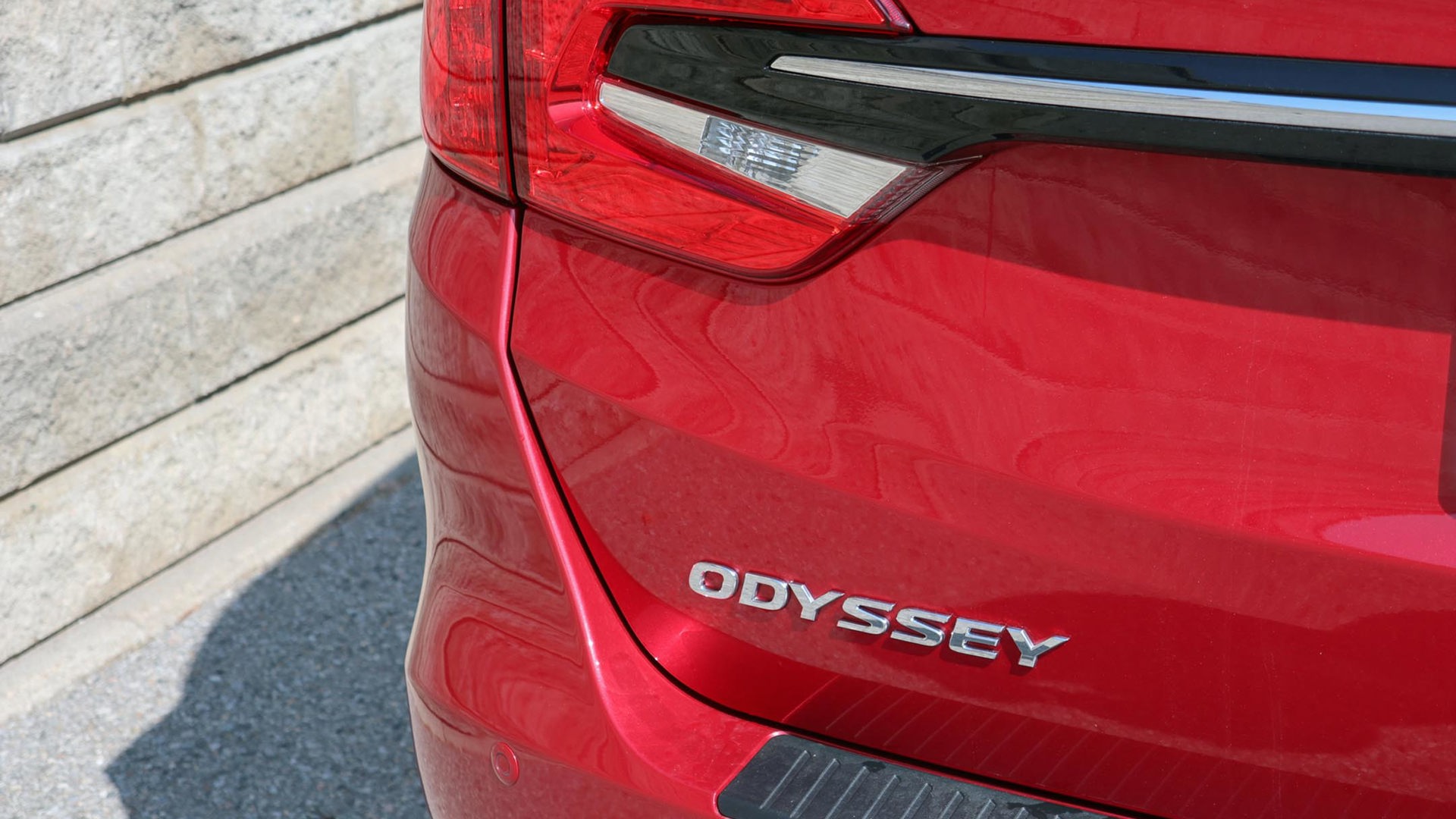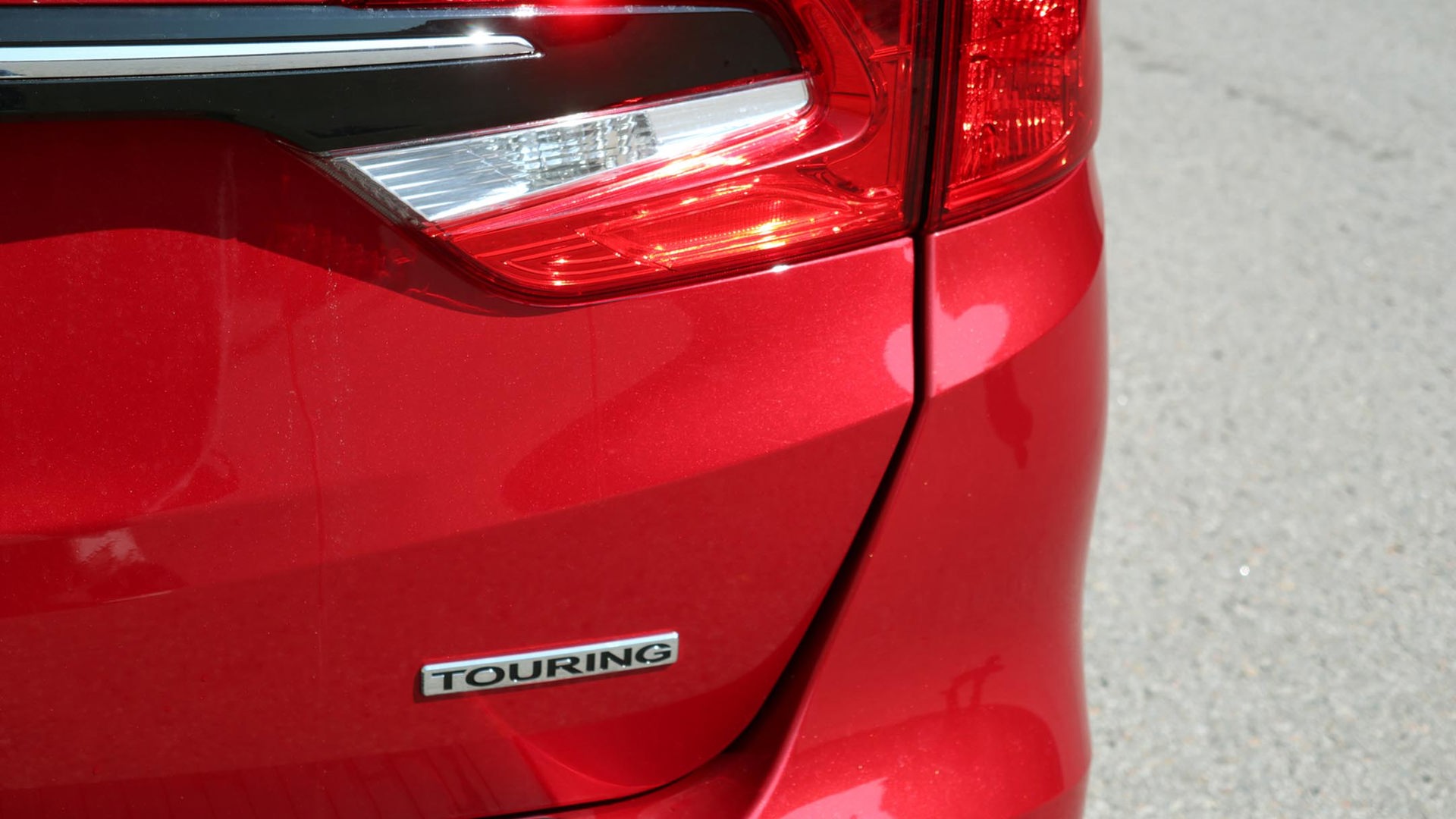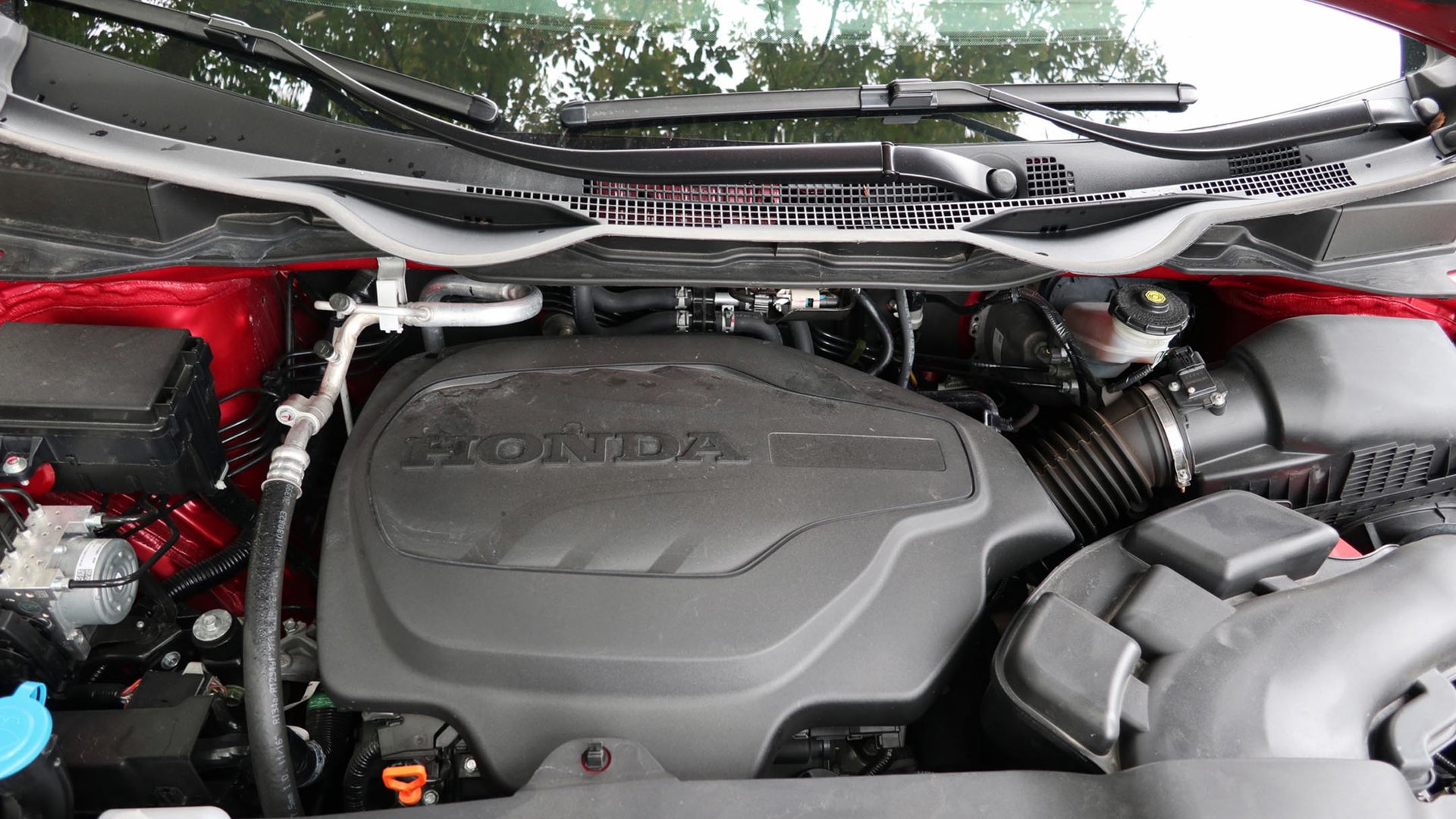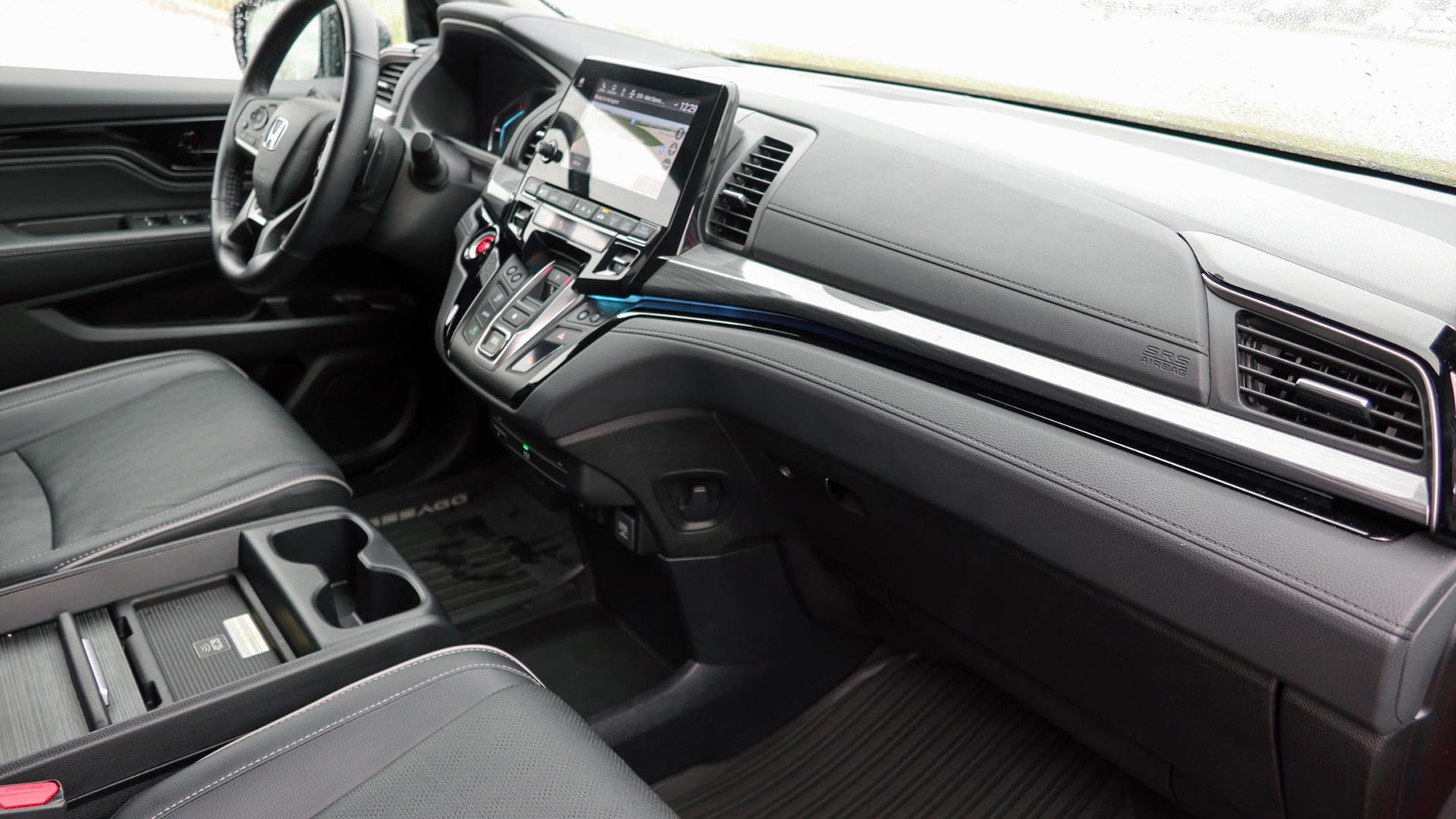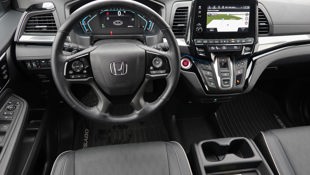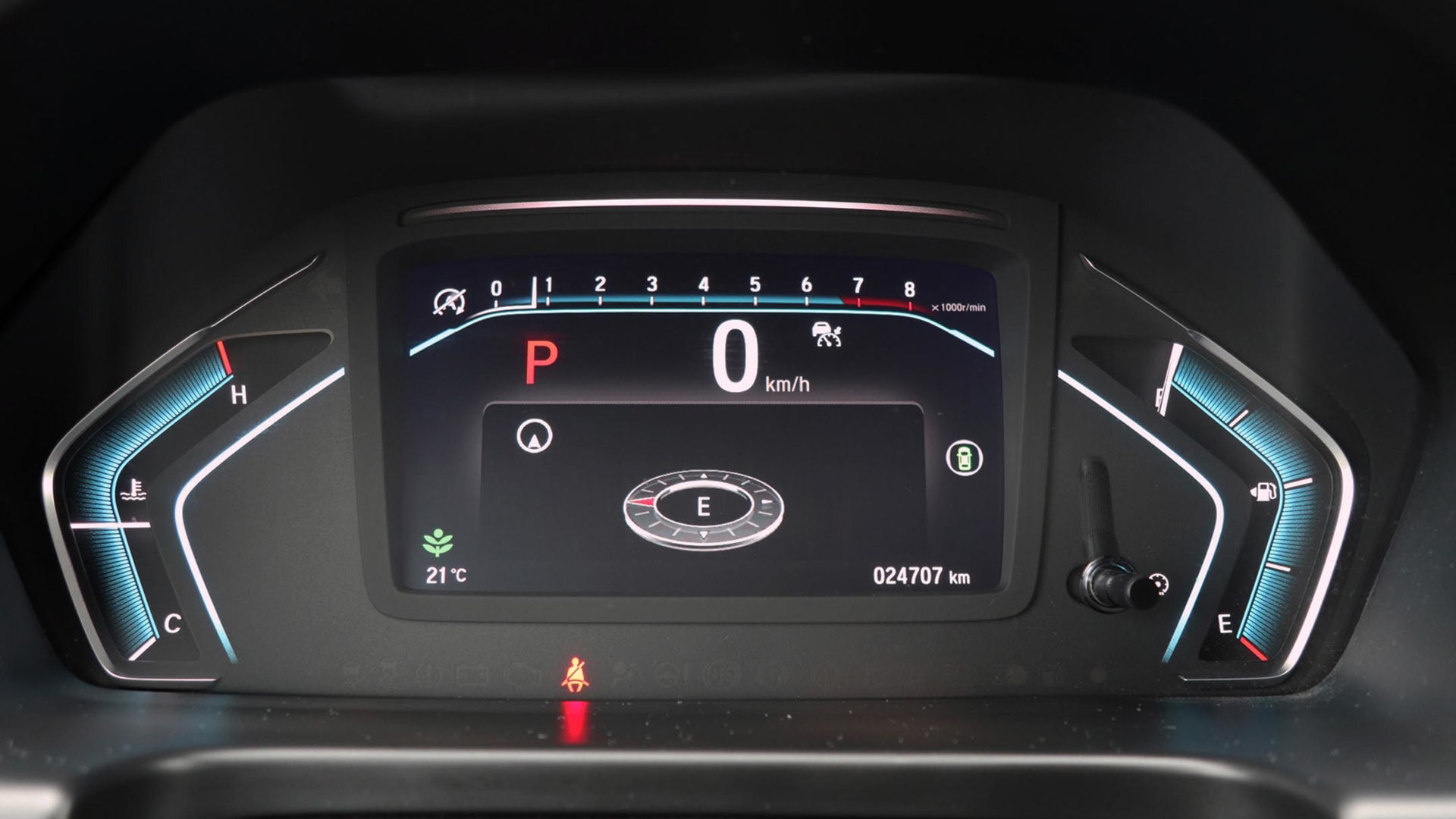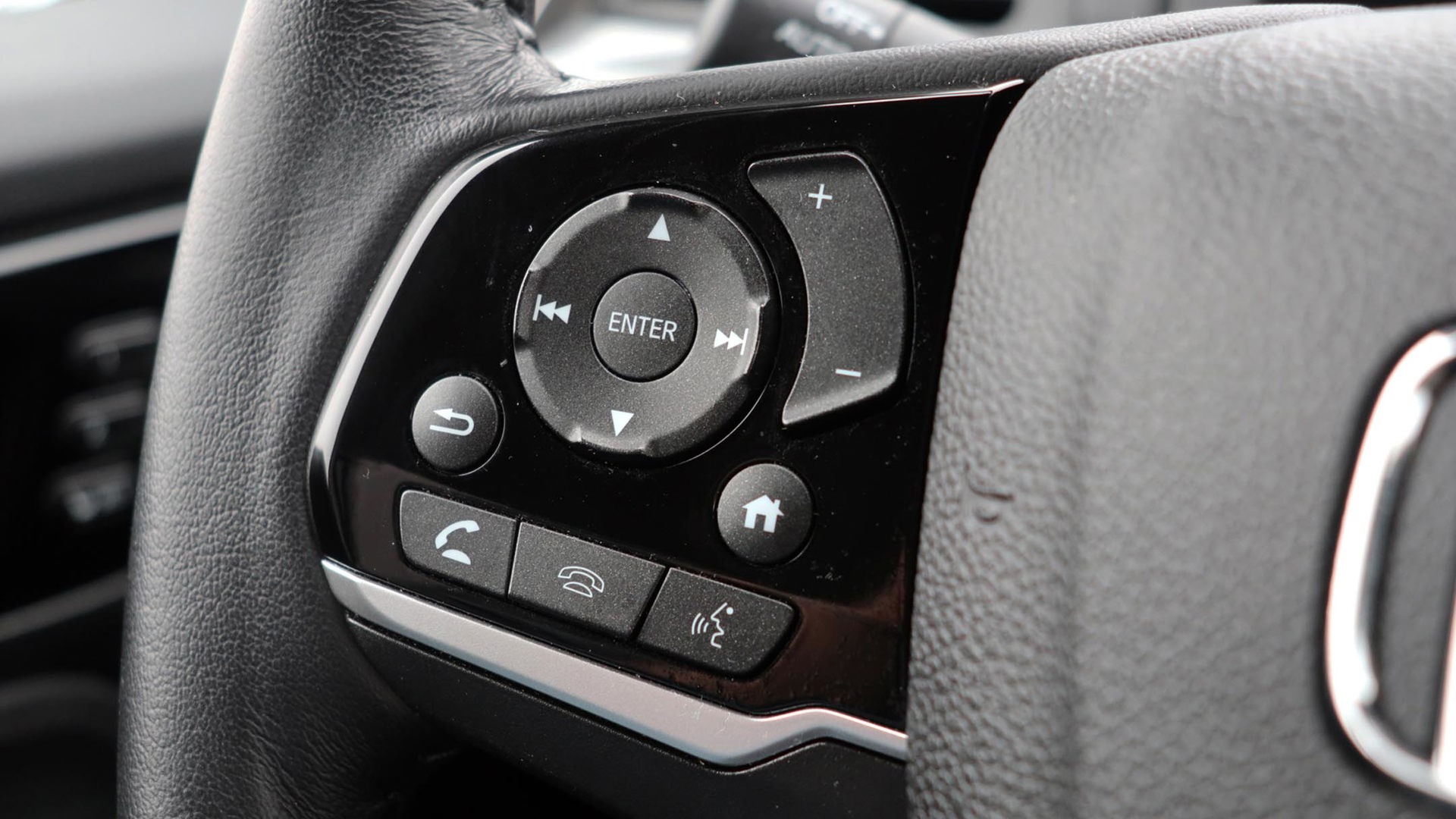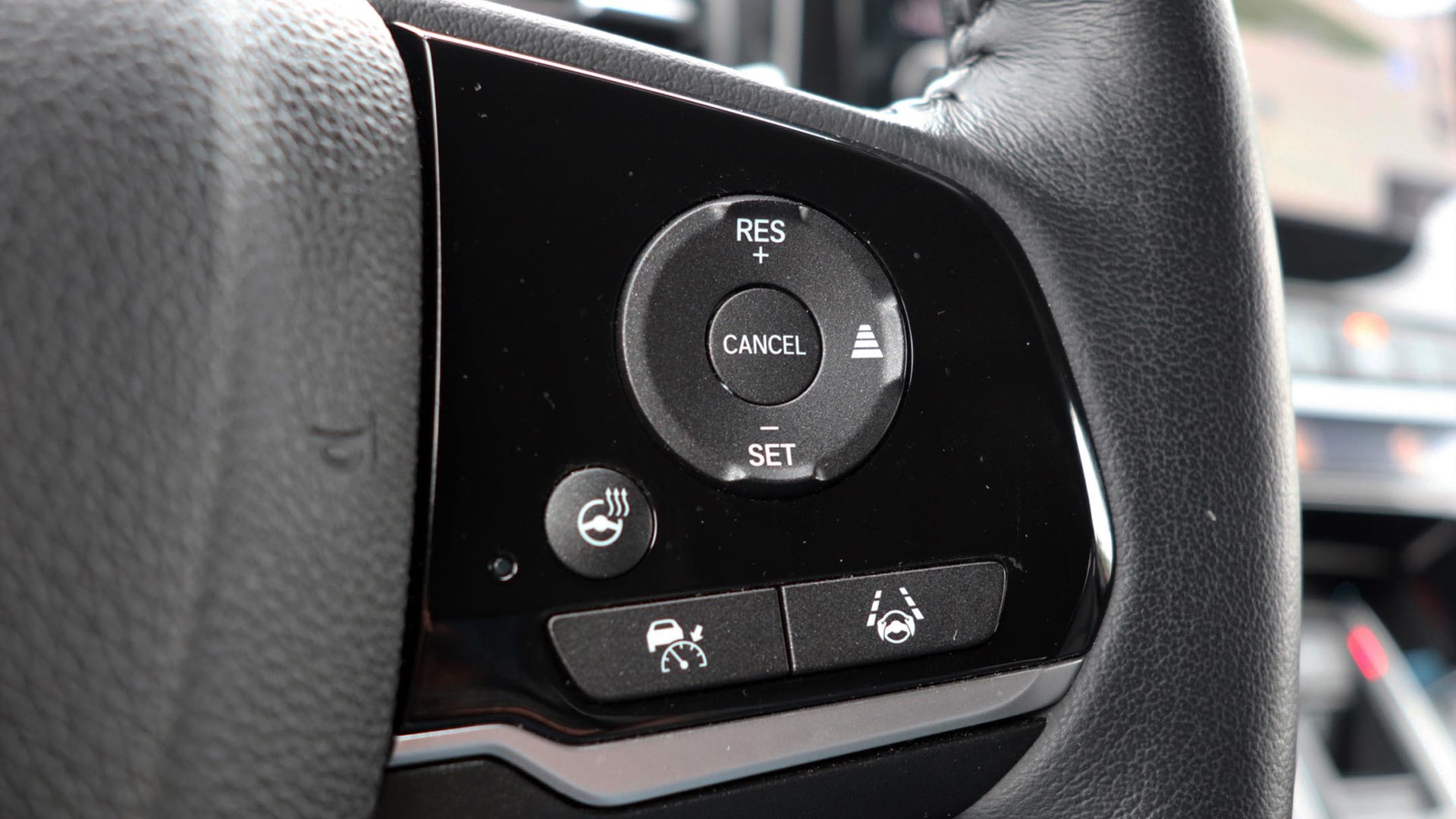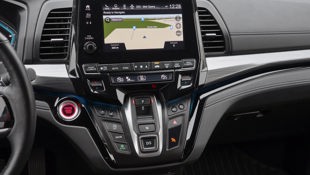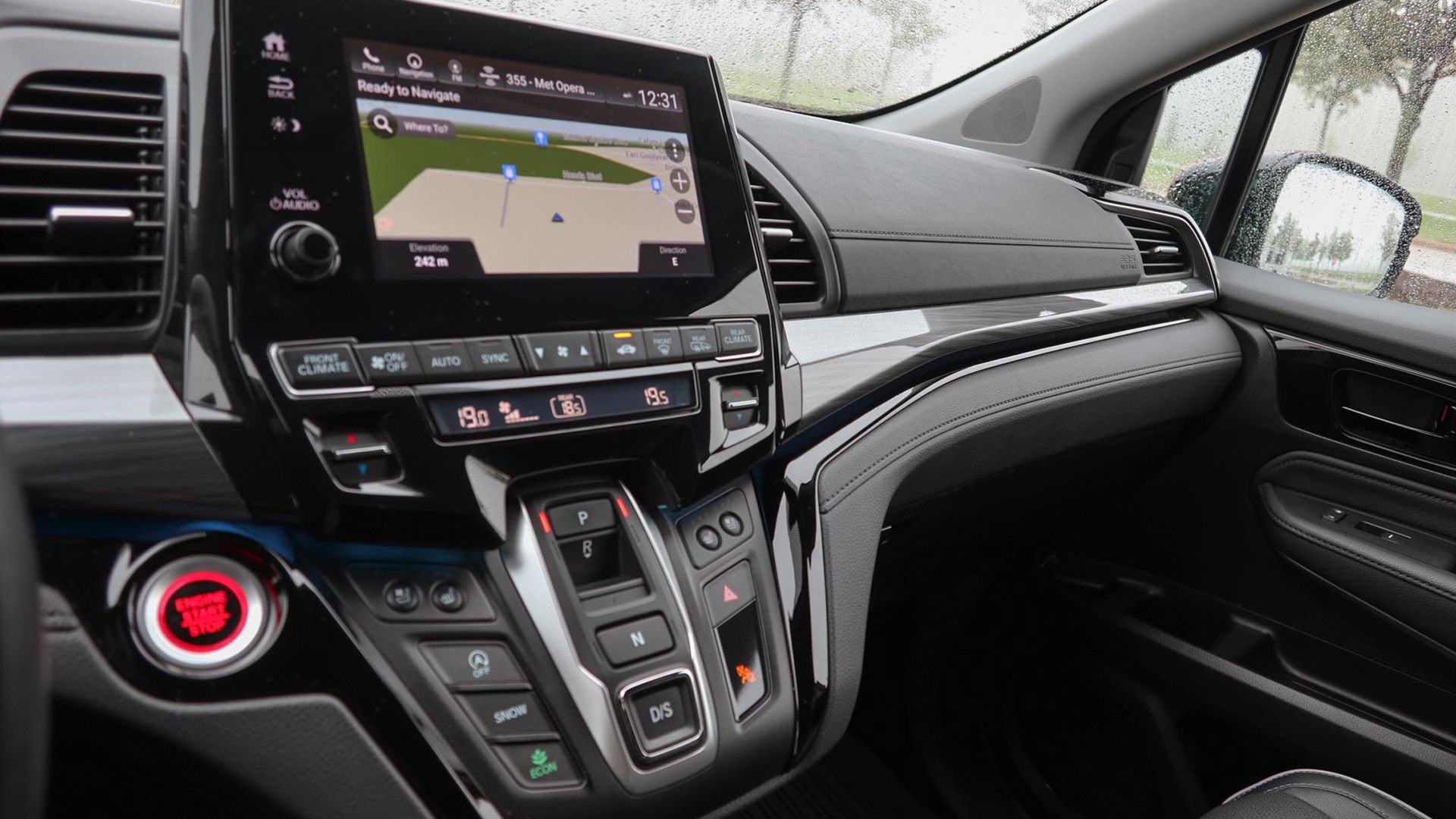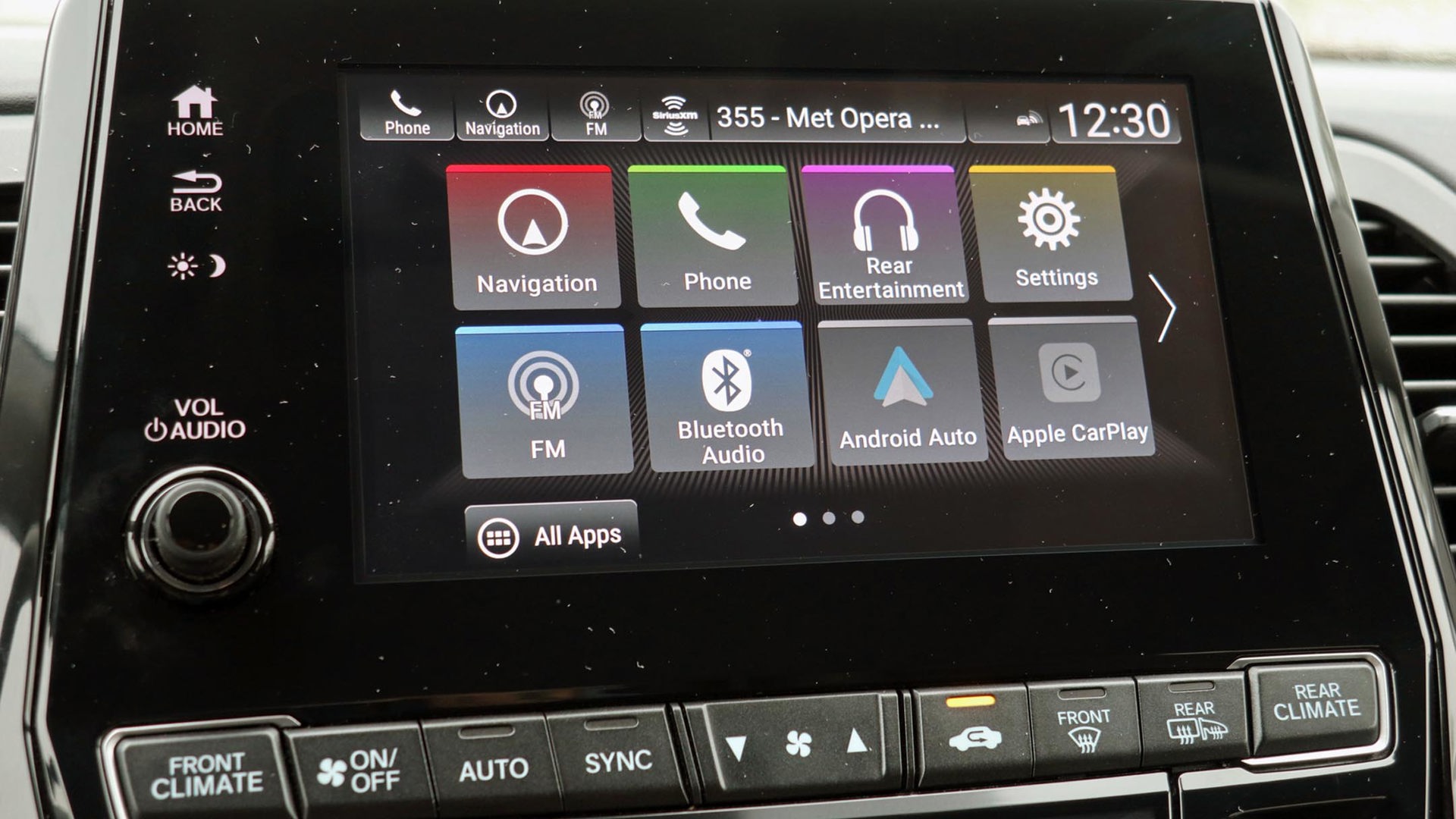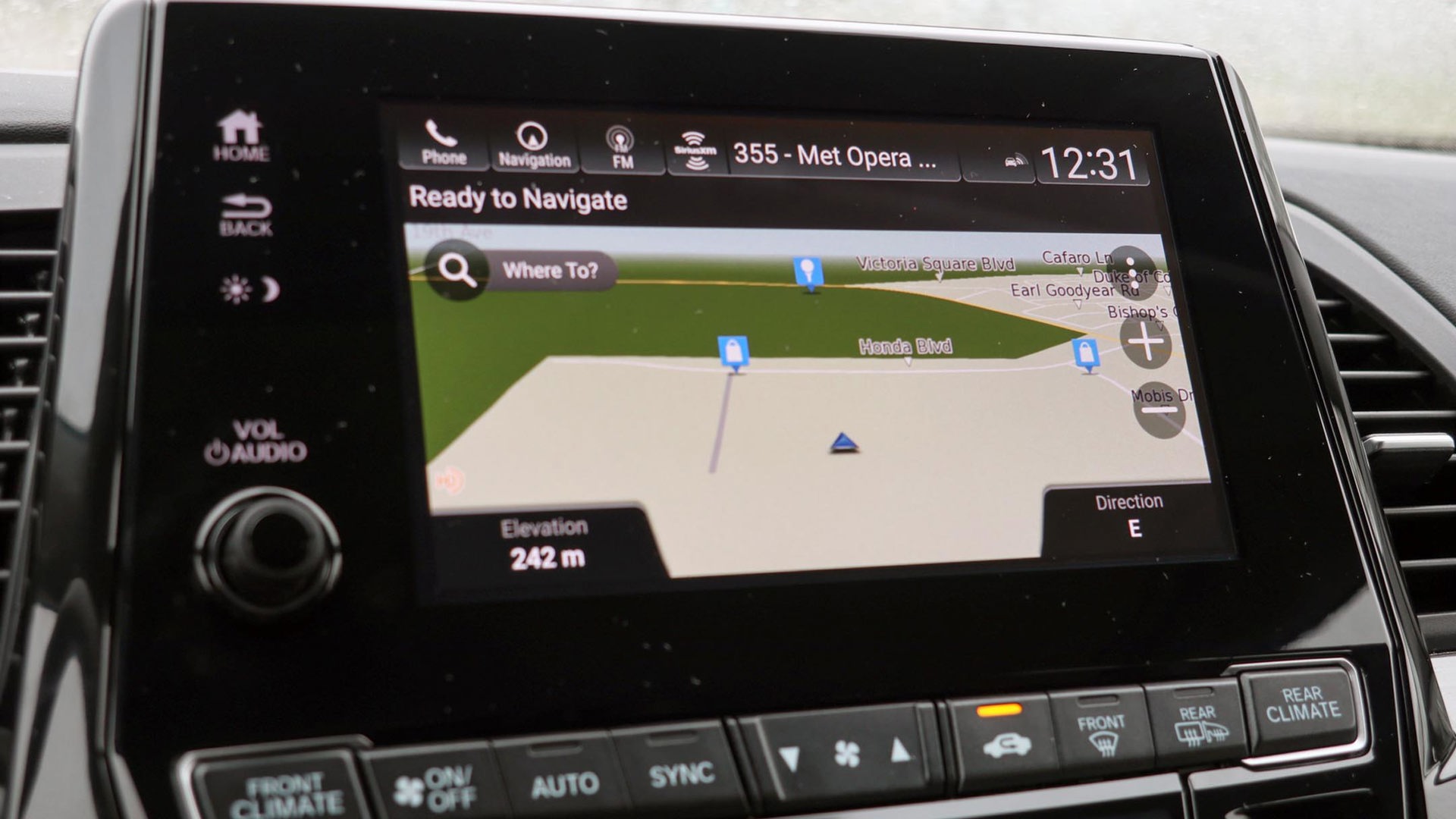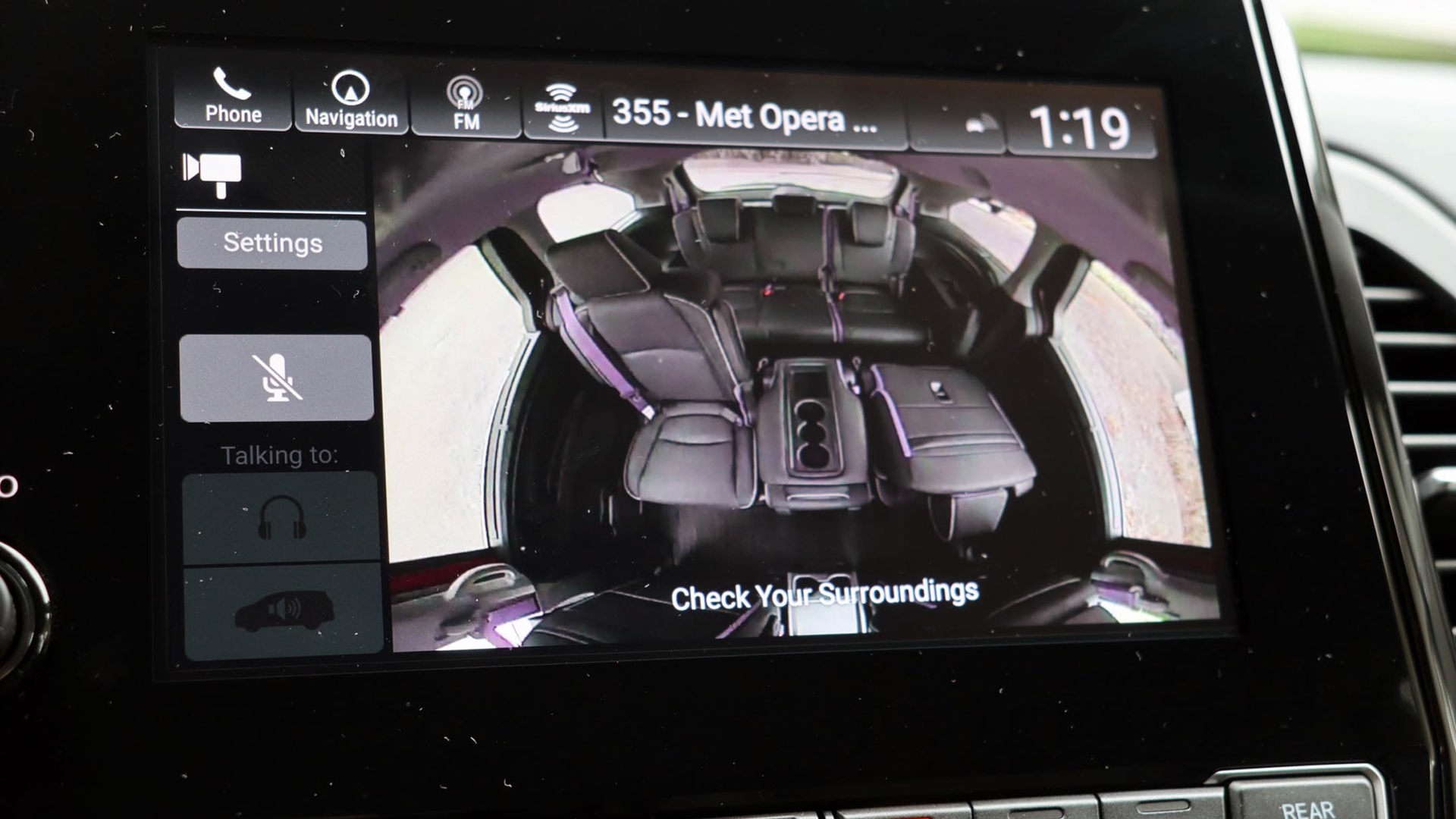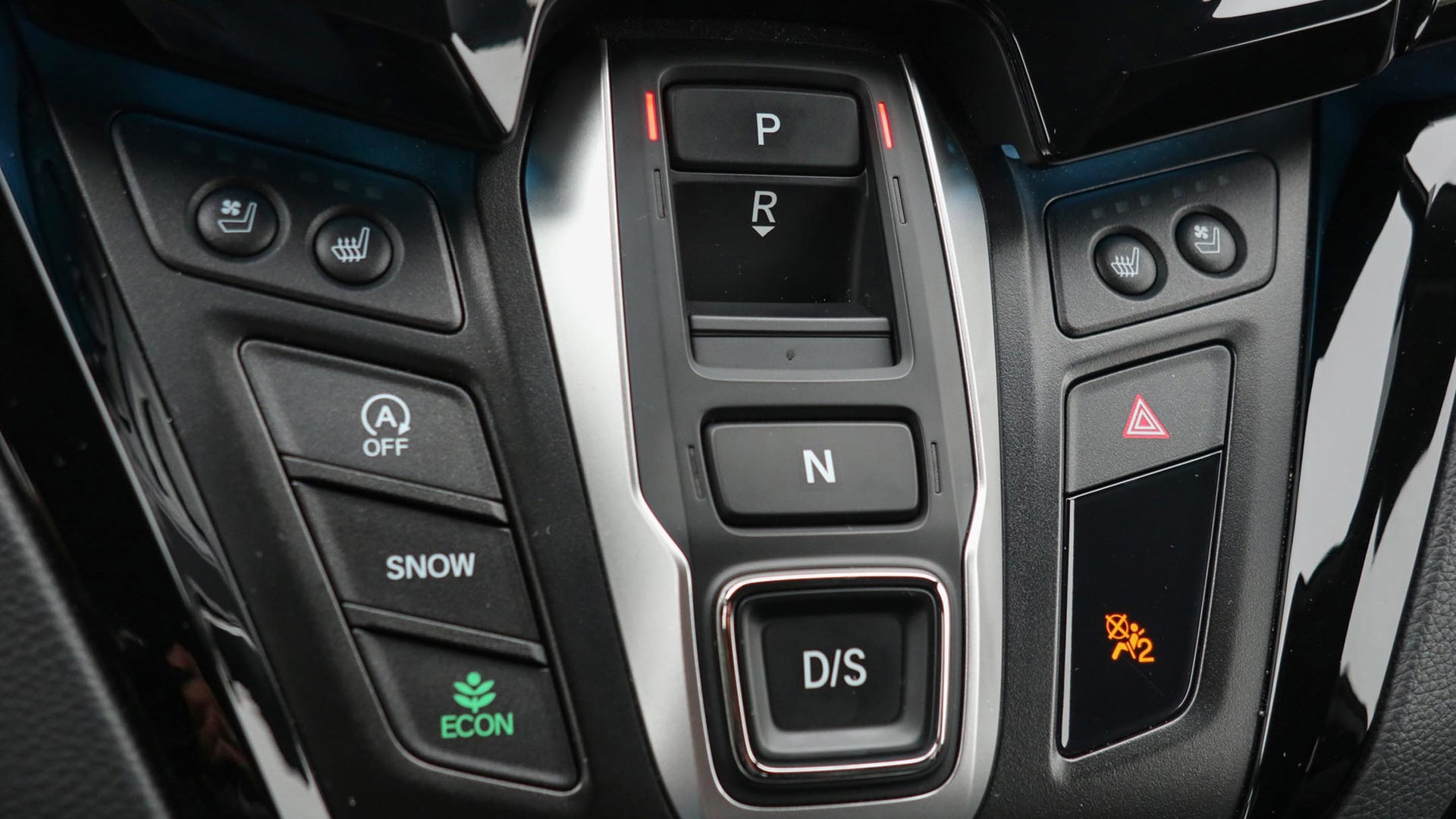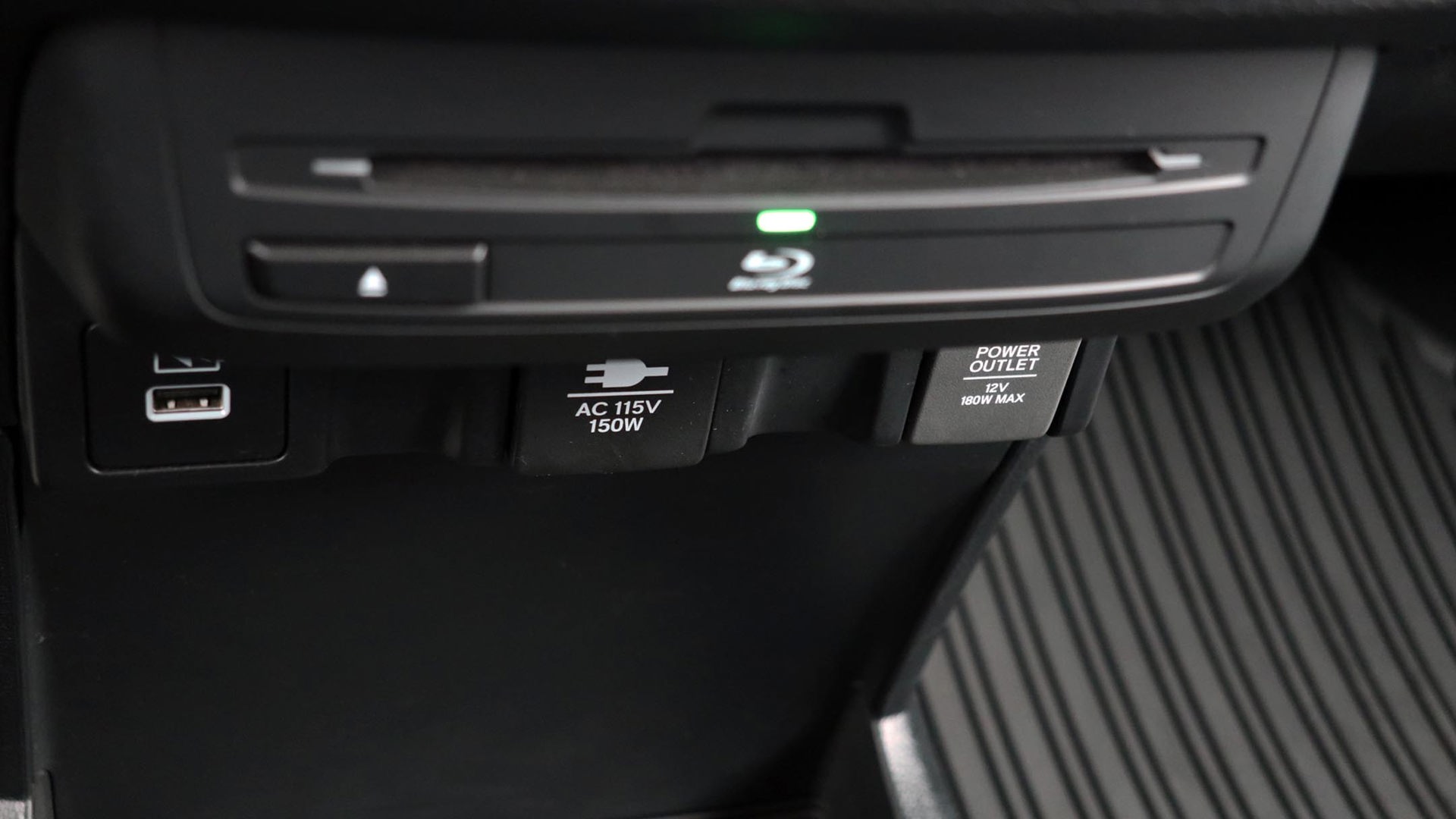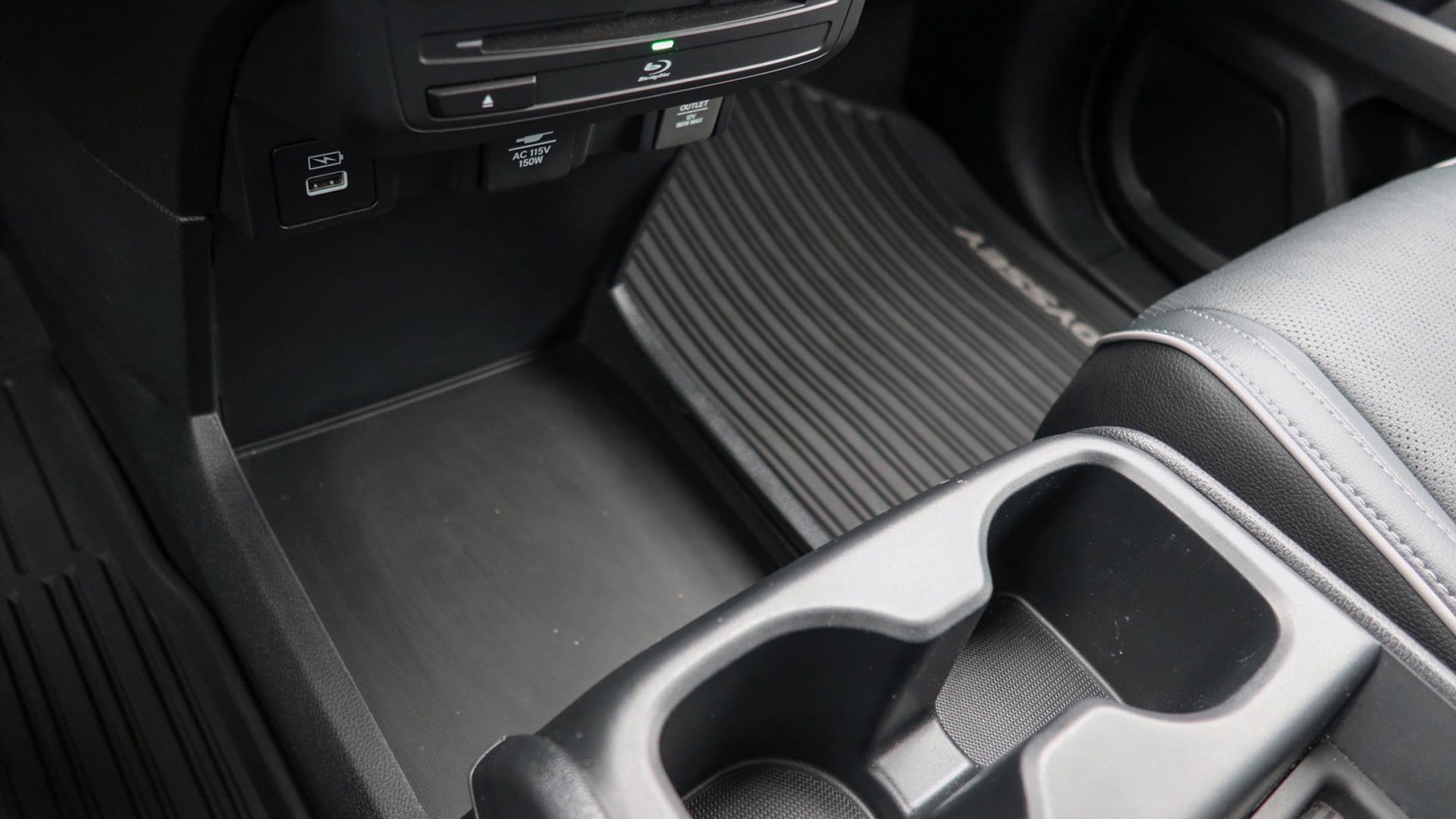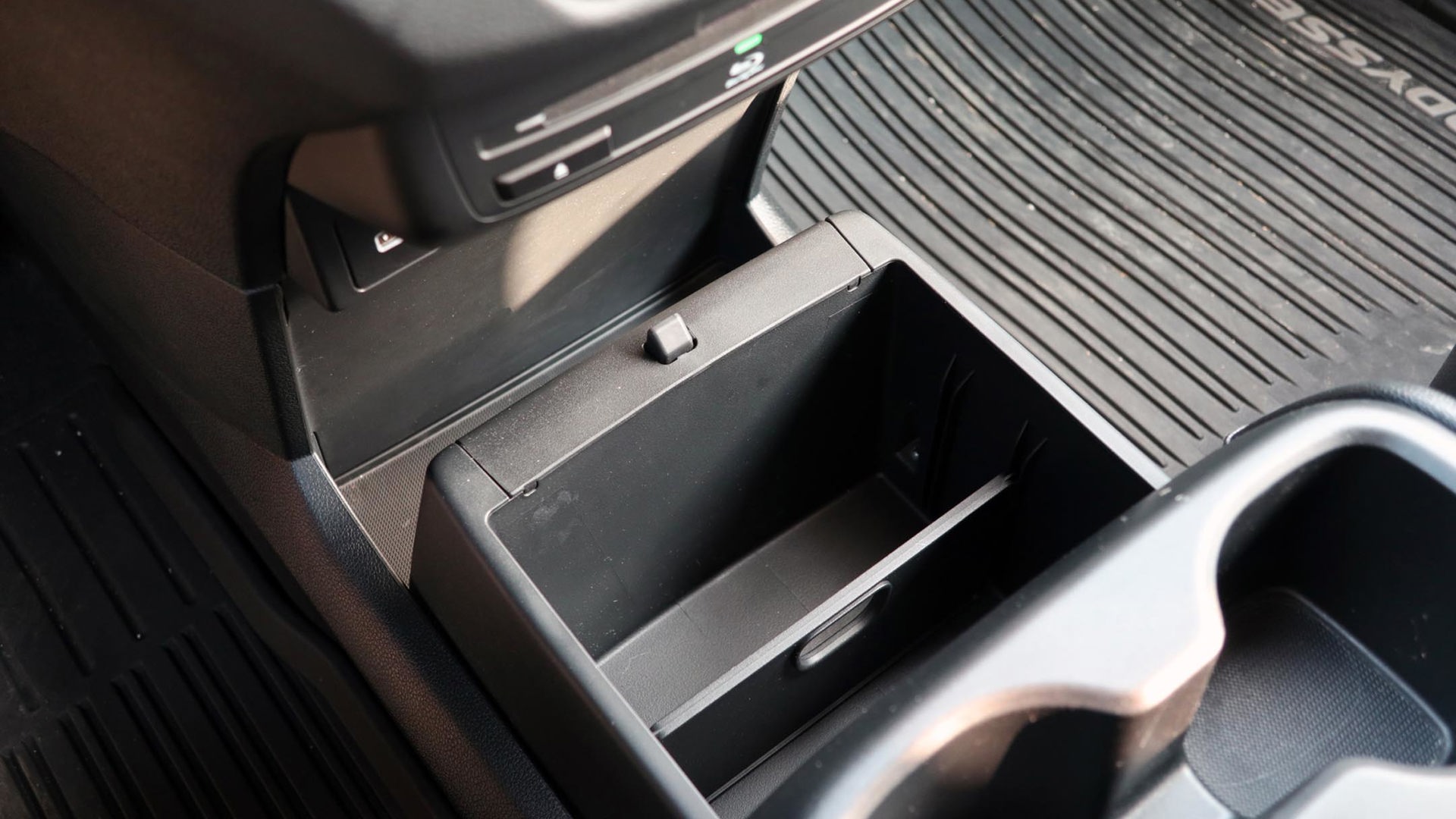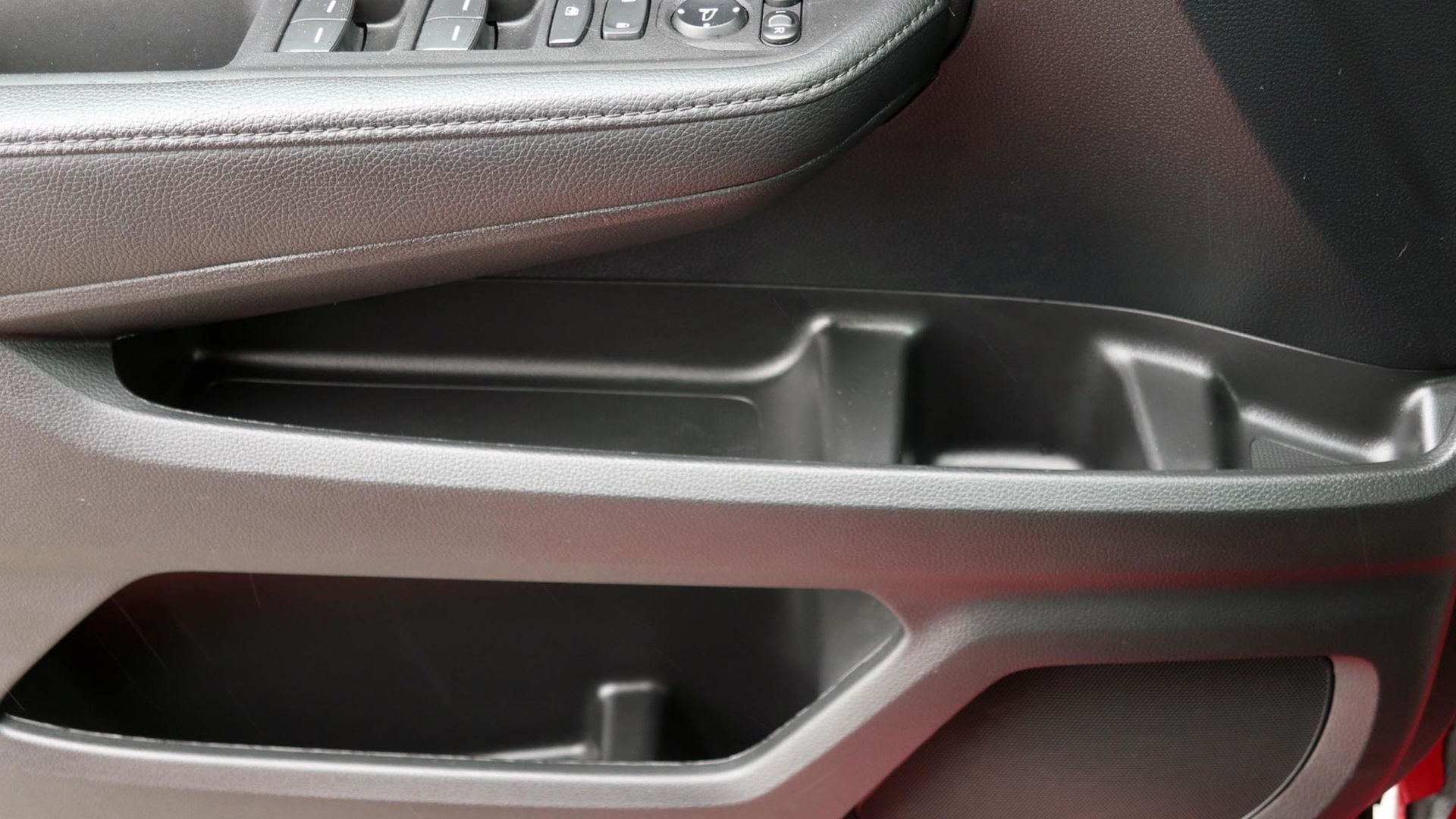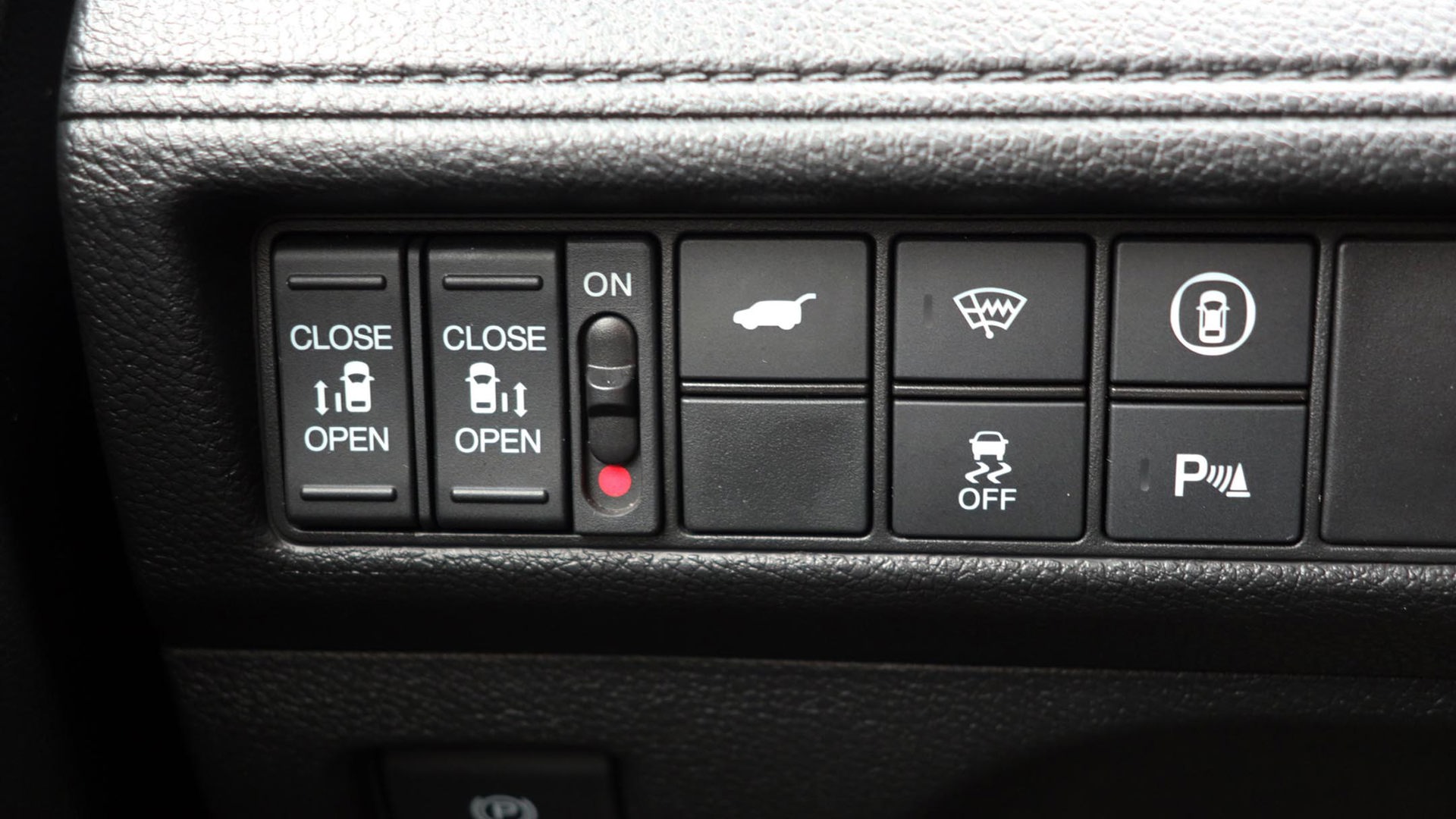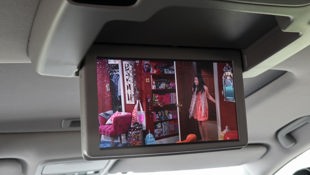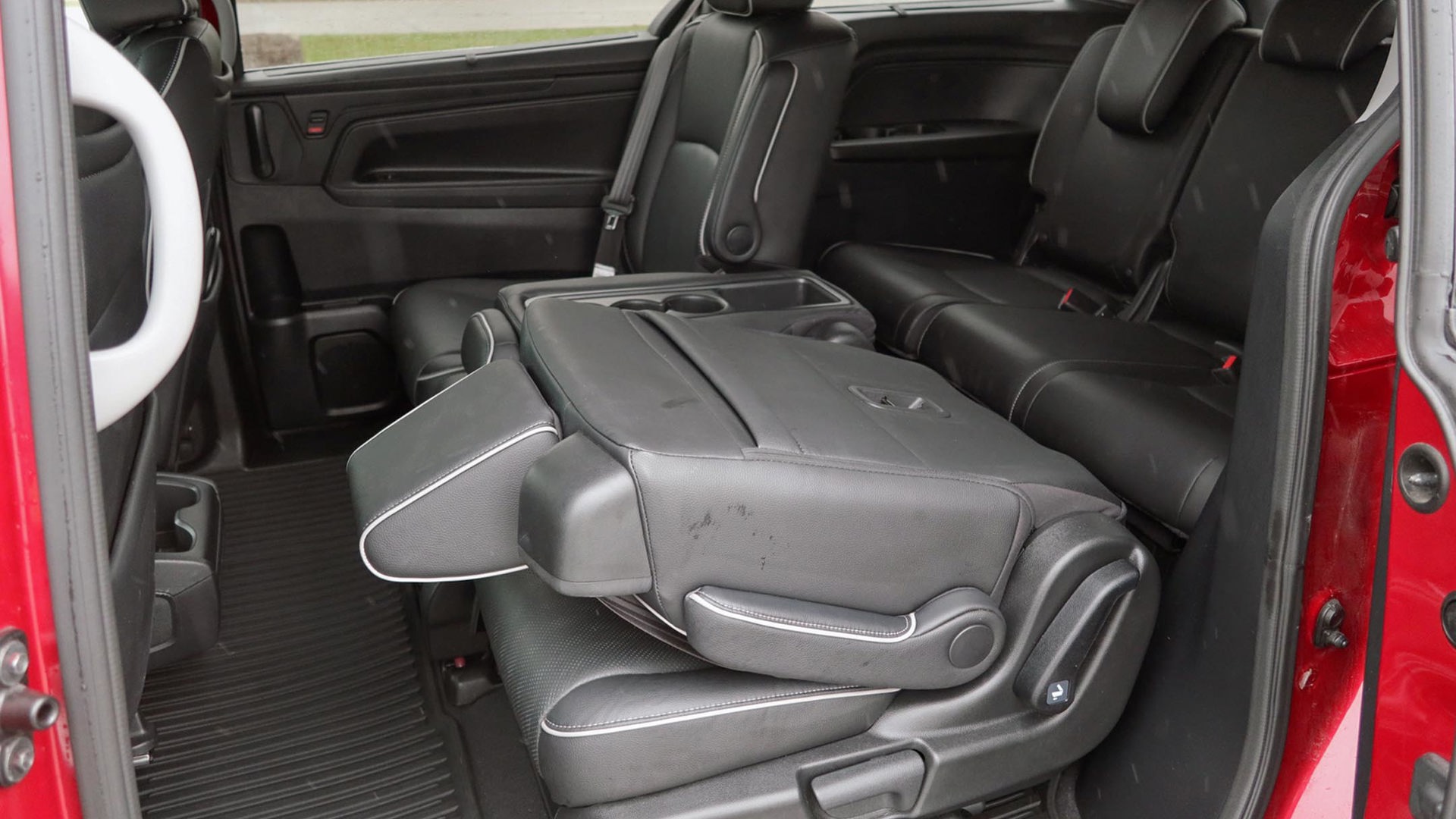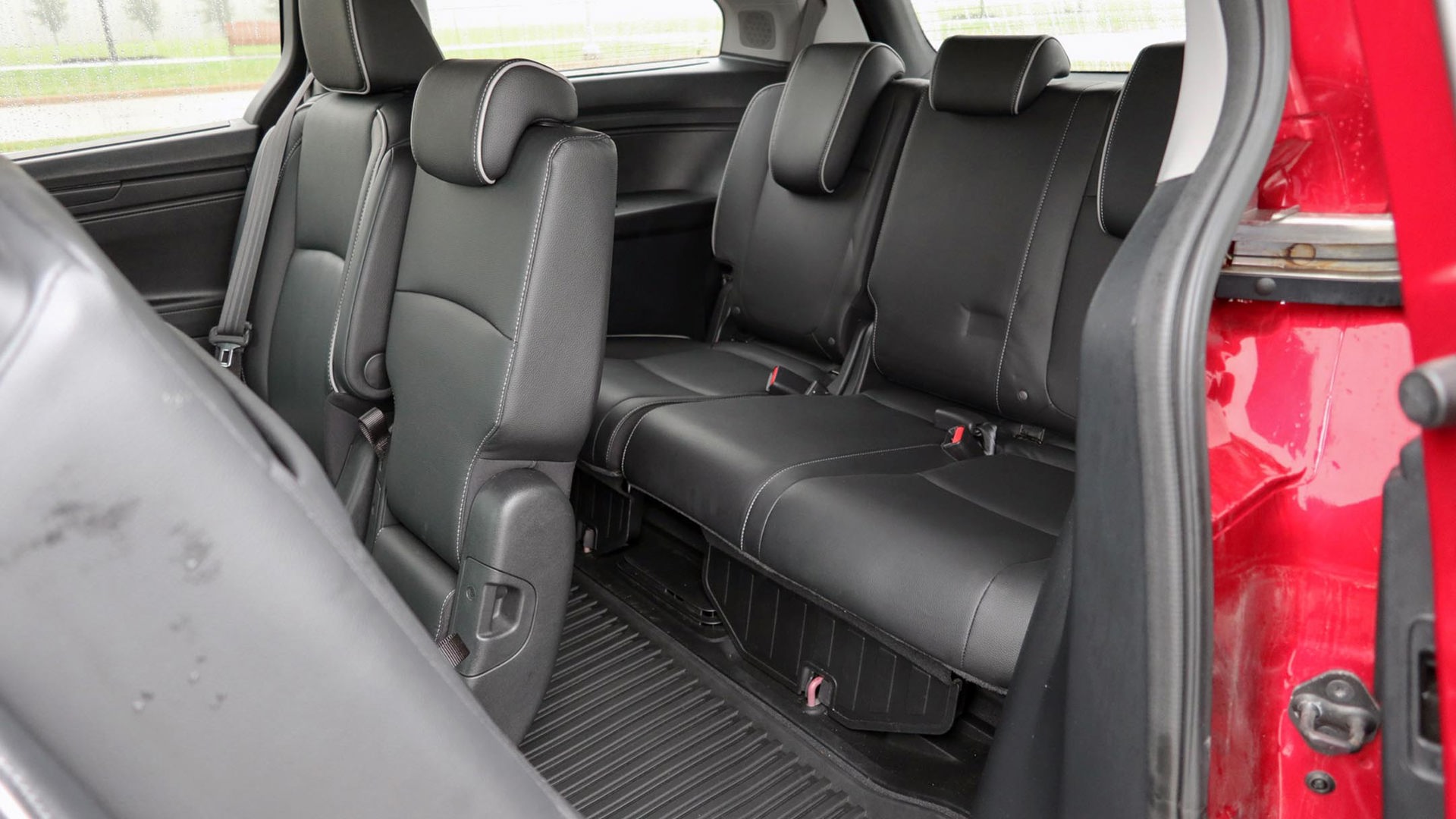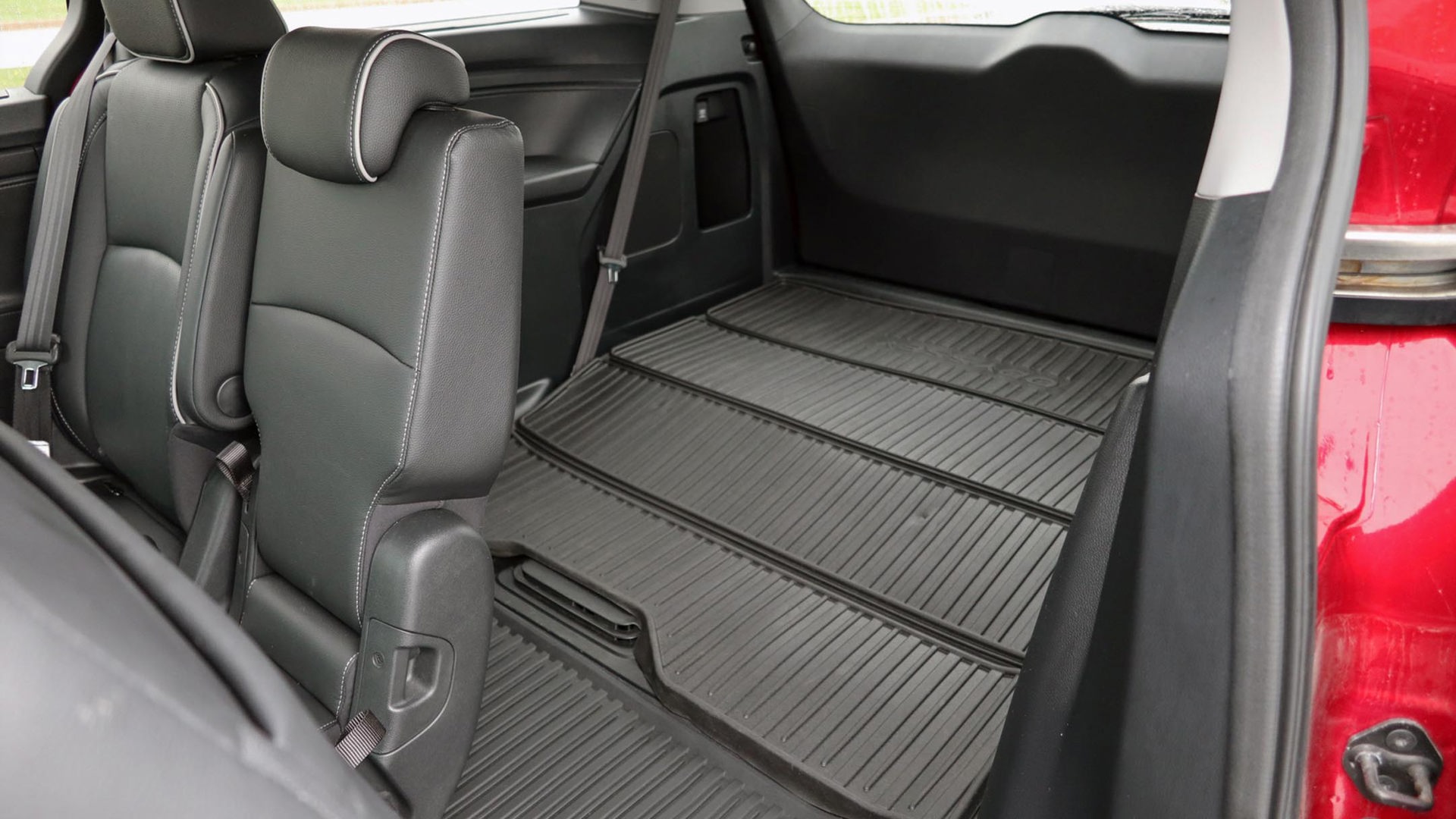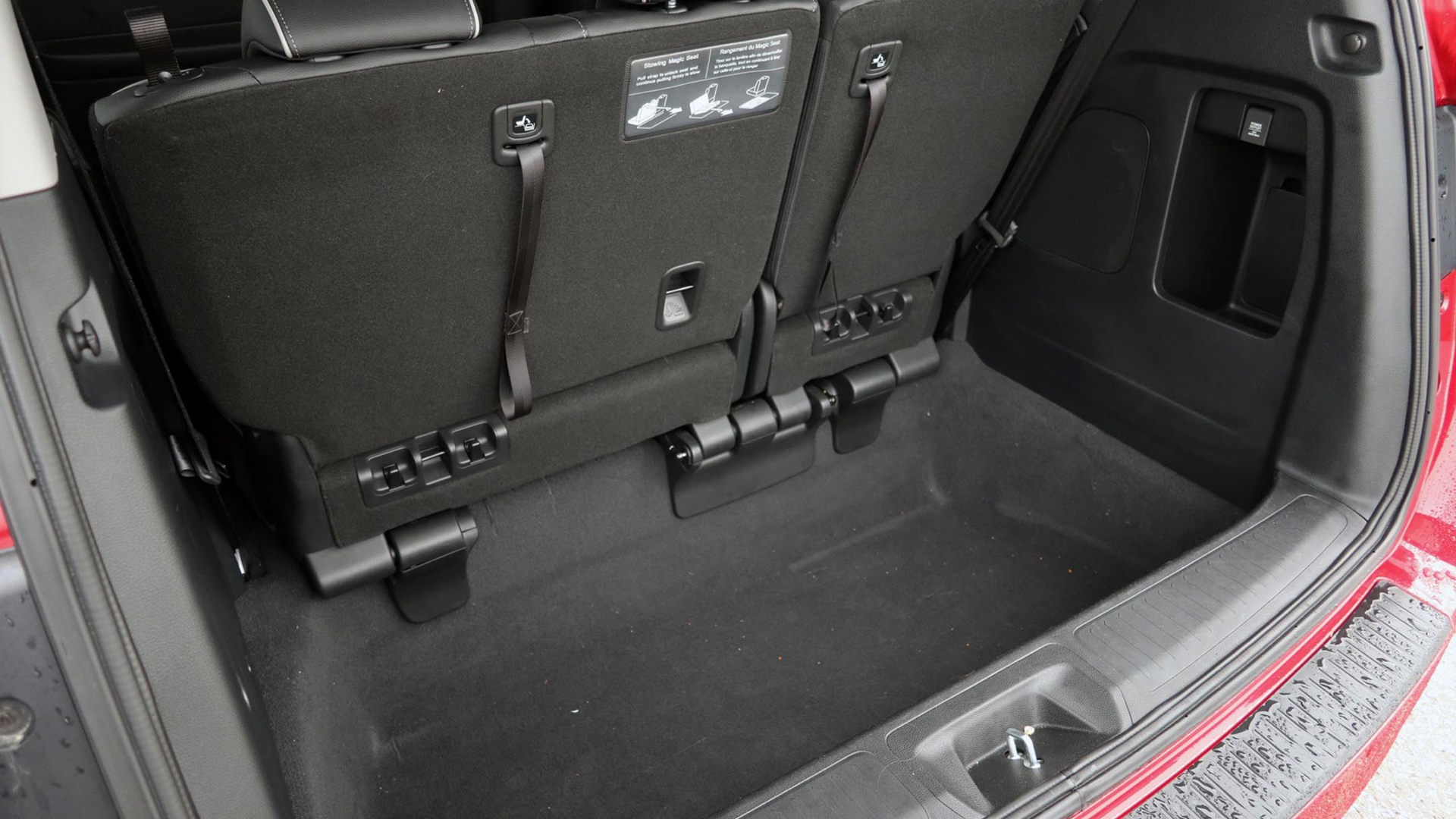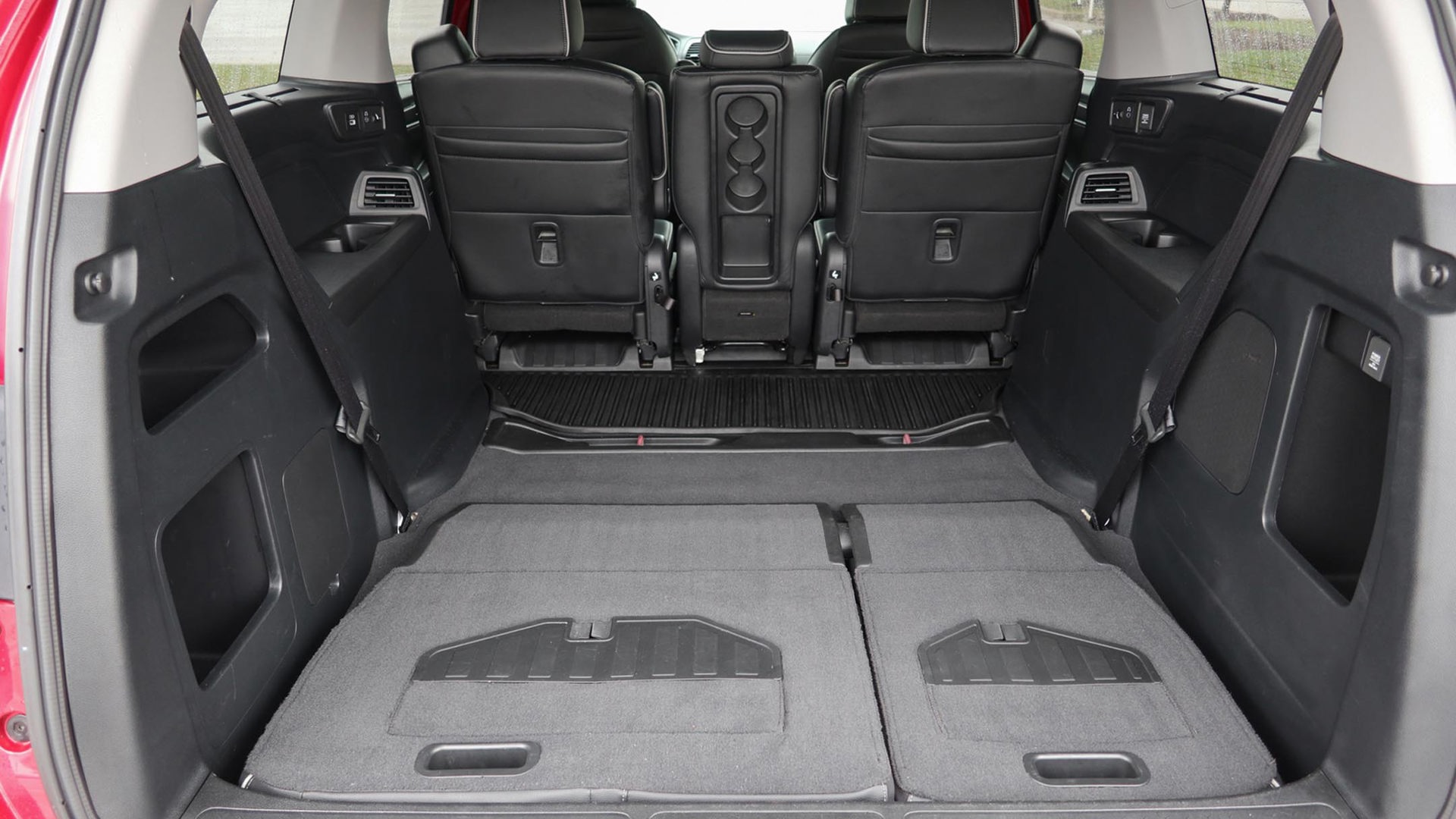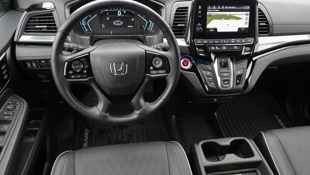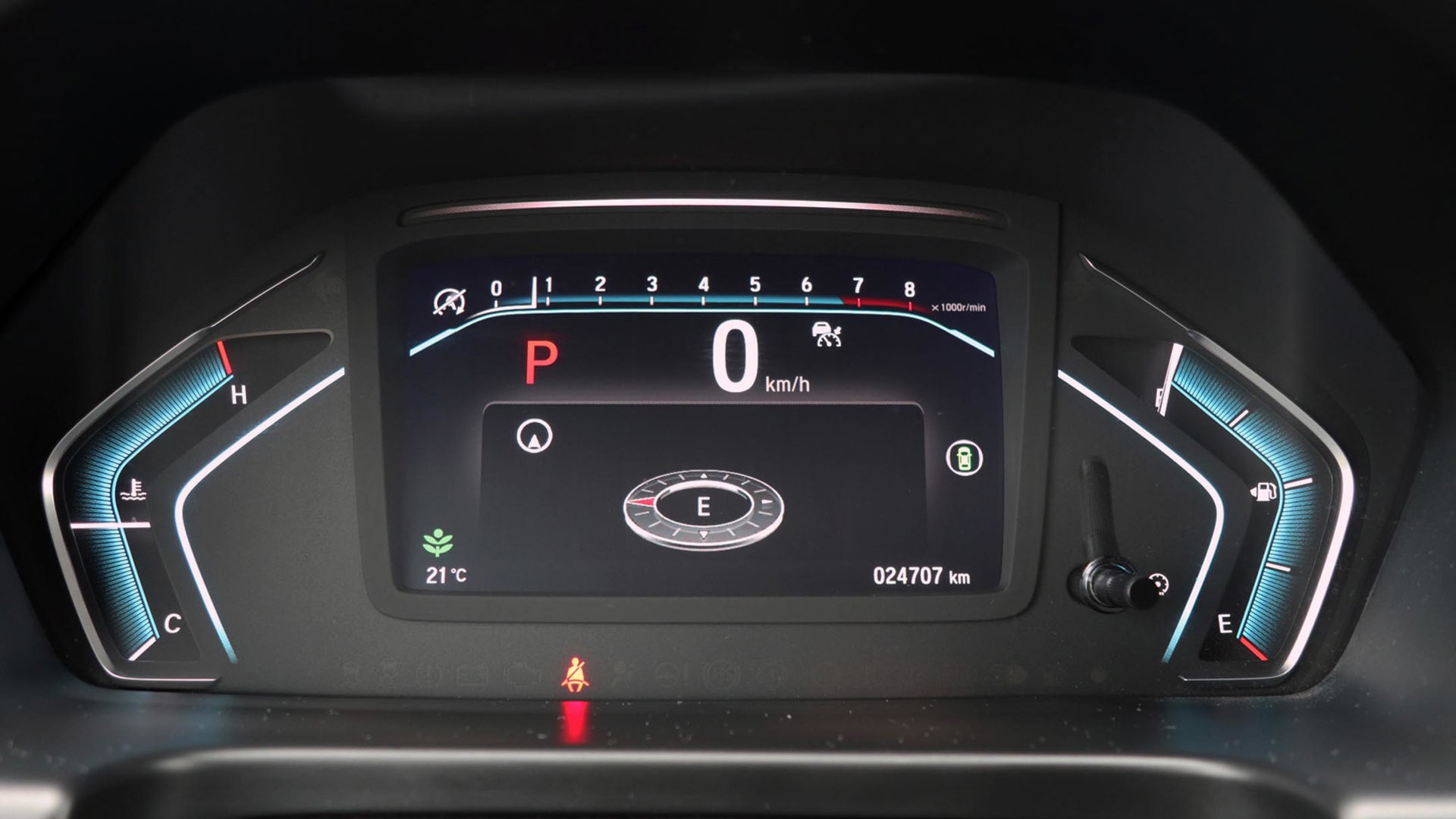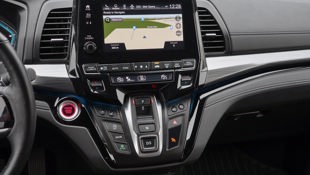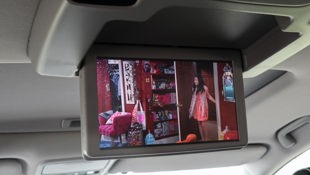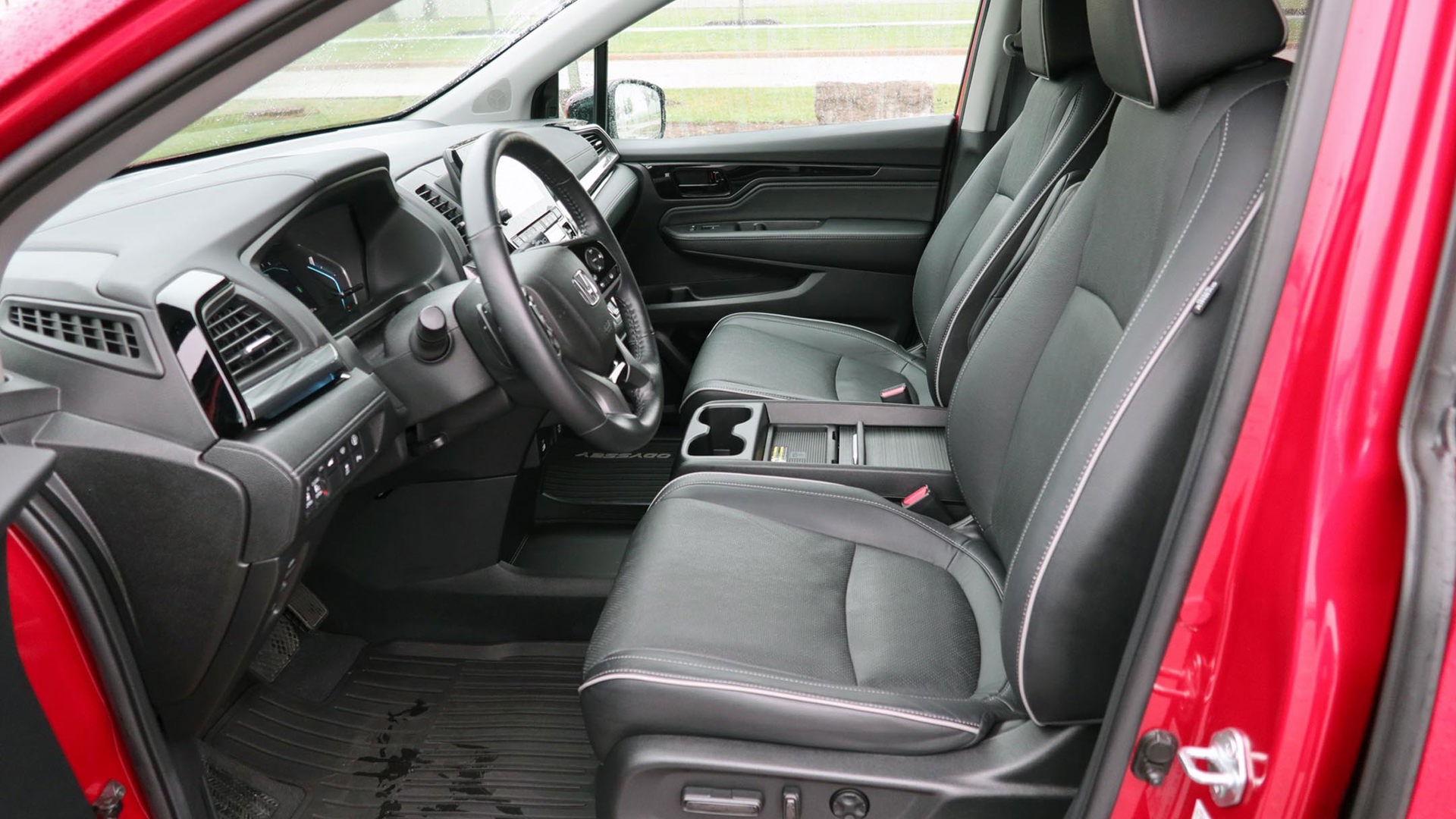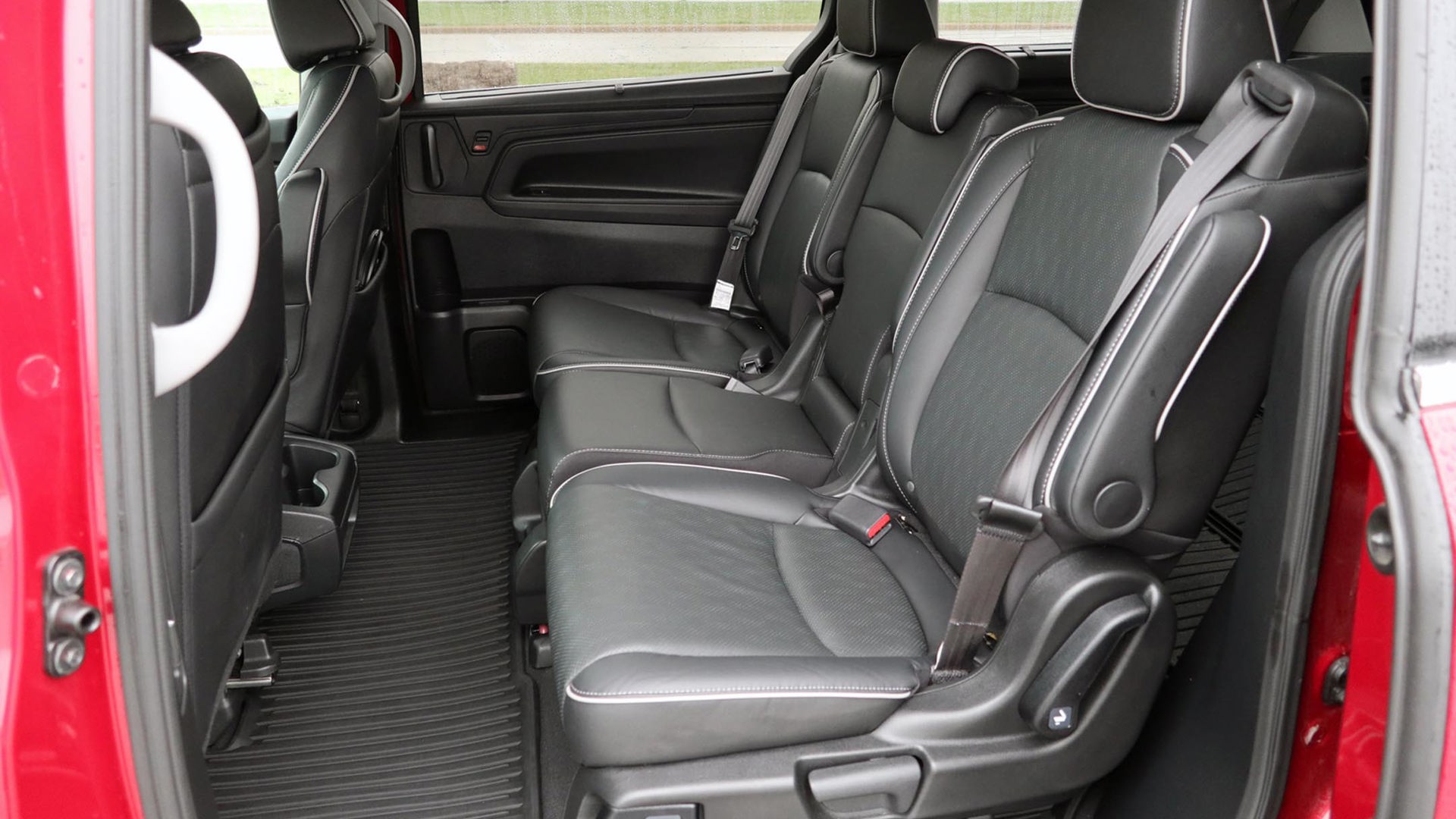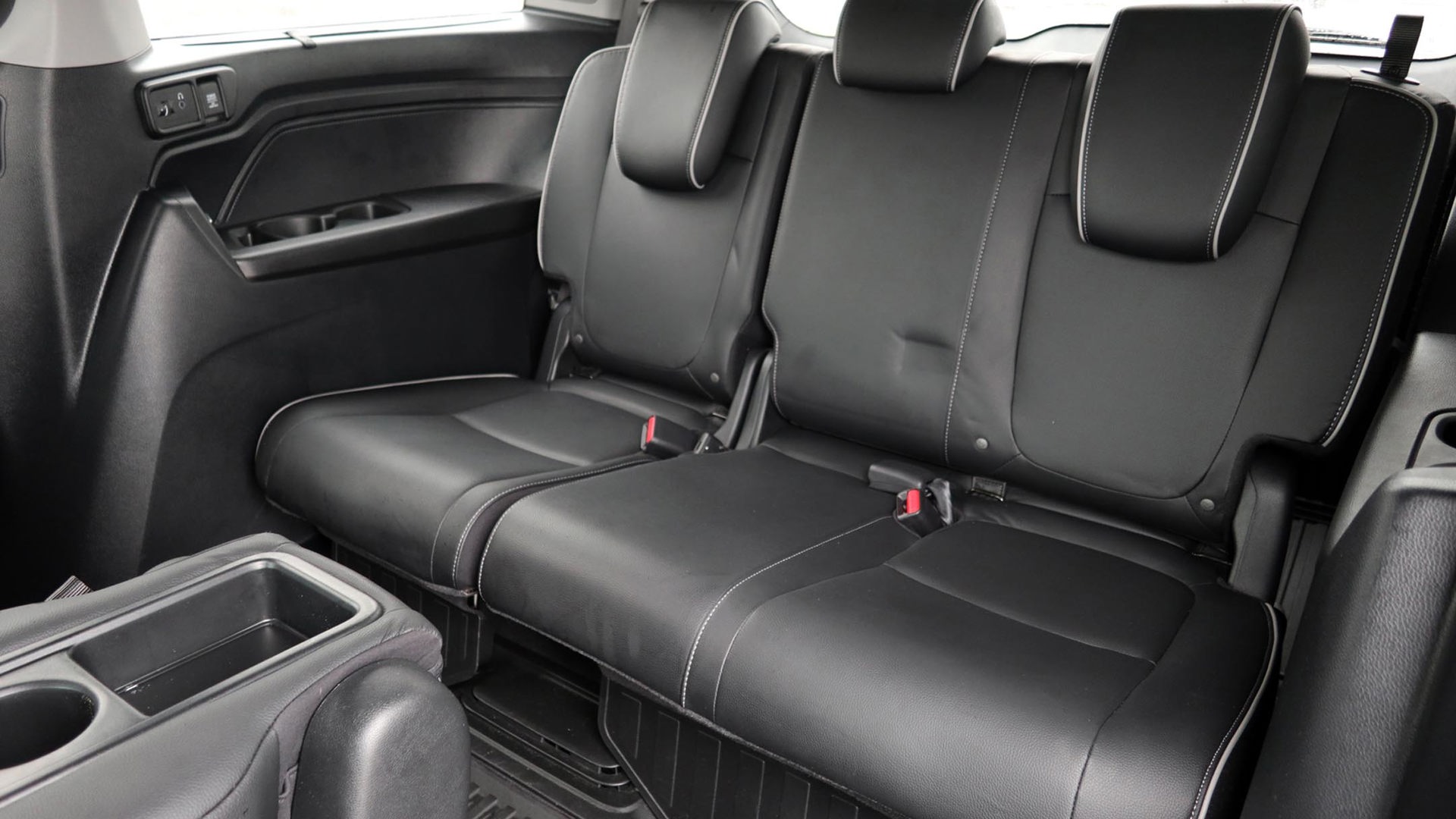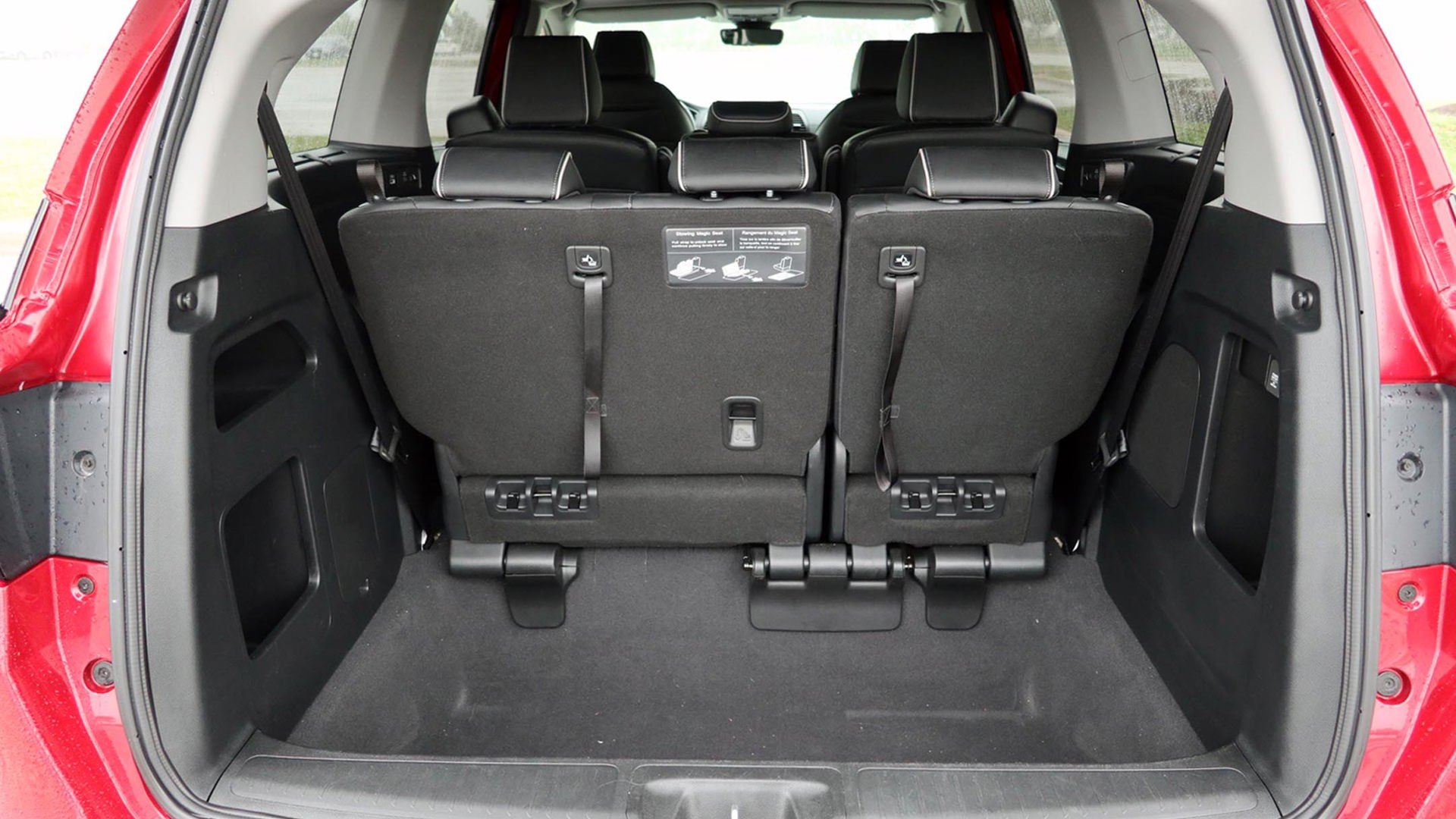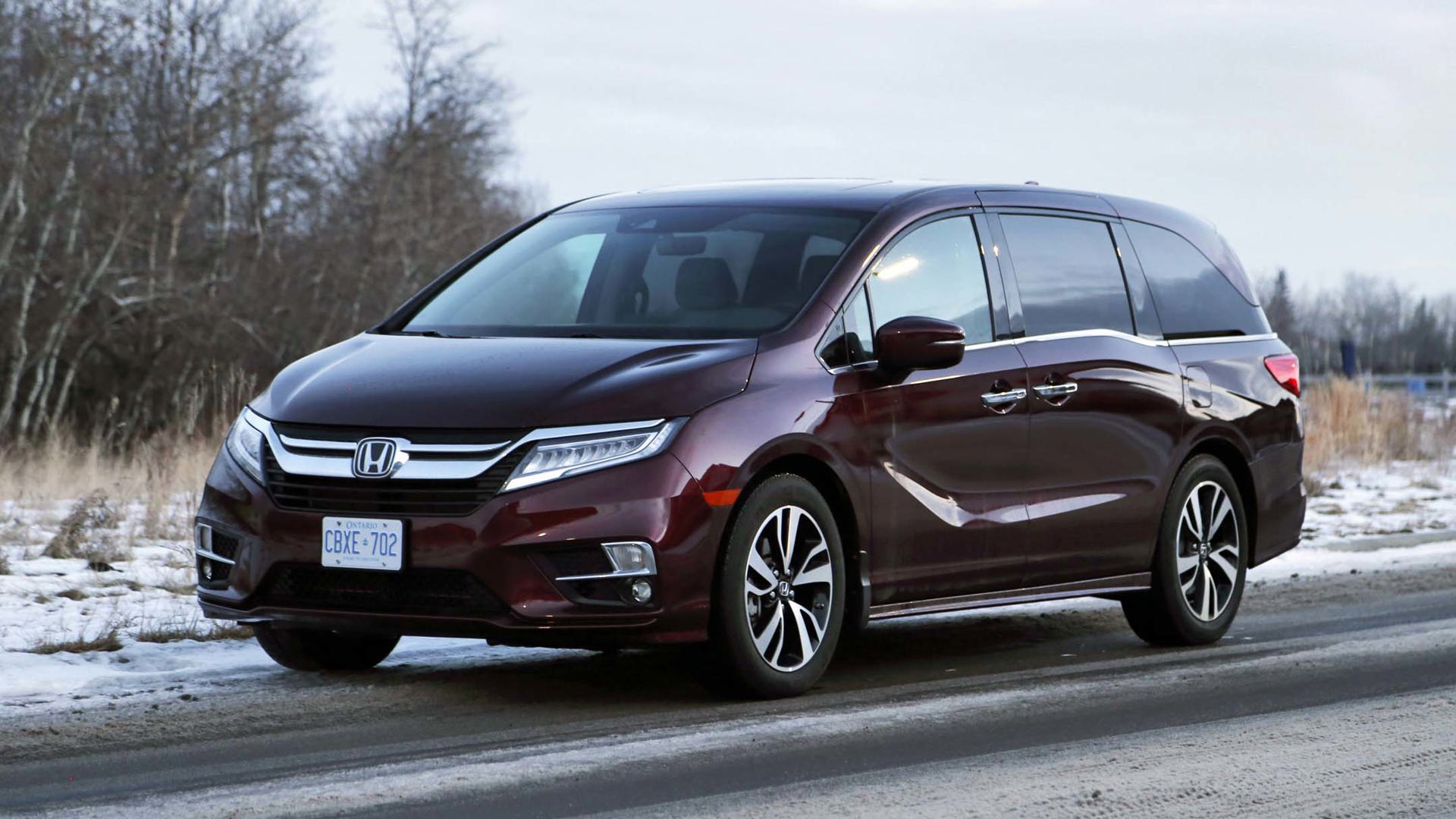 AutoTrader SCORE
AutoTrader SCORE
-
STYLING8/10
-
Safety9/10
-
PRACTICALITY8/10
-
USER-FRIENDLINESS8/10
-
FEATURES9/10
-
POWER8/10
-
COMFORT8/10
-
DRIVING FEEL8/10
-
FUEL ECONOMY8/10
-
VALUE7/10
The minivan segment is smaller than it used to be, but it’s still packed with good choices, including the 2023 Honda Odyssey.
It comes in four trim levels, starting with the EX at $47,540, including a non-negotiable delivery fee of $1,950. The EX-L adds leather upholstery and other items for $52,540. This Touring tester rings in at $58,740, while the top-of-the-line Black Edition is $60,540.
Styling: 8/10
The Odyssey manages to be both boxy and swoopy at the same time, thanks to twin body lines through the doors and a chrome-accented dip in the rear one. The hatch goes down to the bumper, making it easier to lift items into the cargo compartment. A sunroof is standard on all trims, and a hands-free tailgate is added to the EX-L and up.
The cabin design is best described as “chunky,” with a heavy eyebrow over the instrument cluster, large controls on the steering wheel, and a tablet-style infotainment screen above the centre stack.
Safety: 9.5/10
The Odyssey scores the top five-star crash-test rating from the United States National Highway Traffic Safety Administration (NHTSA), along with a Top Safety Pick+ from the Insurance Institute for Highway Safety (IIHS). The Toyota Sienna and Chrysler Pacifica also earned both. The other available minivan, the Kia Carnival, got Top Safety Pick but not the plus due to its headlights, and hasn’t yet been rated by NHTSA.
Driver-assist safety technologies are standard across all Odyssey trim levels, including emergency front braking, lane-keeping assist, blind-spot monitoring, adaptive cruise control, traffic sign recognition, and automatic high-beam headlights, along with the rearview camera that’s mandatory on all new vehicles.
Features: 9/10
All trim levels include such features as LED headlights, a 115-volt power outlet, auto-dimming mirror, second- and third-row sunshades, proximity door locks, remote starter, tri-zone automatic climate control, wireless phone charger, heated front seats and steering wheel, power-adjustable front seats, Apple CarPlay and Android Auto, anda rear-seat entertainment system.
The Touring includes auto-dimming and power-folding exterior mirrors, a hands-free tailgate, driver’s side memory, rain-sensing wipers, navigation, ventilated front seats, and a premium stereo. However, the infotainment system looks and feels dated, and the interface can sometimes be clunky to use. A single-screen rear system is also old-fashioned, but it’s also rare to get back-seat entertainment in all trims.
User Friendliness: 8.5/10
Although the Odyssey doesn’t have hands-free sliding side doors as the Sienna does, they can be operated using the key fob. The Honda’s hands-free tailgate can be height-adjusted for easier use. The third-row seats fold in a single motion, and the second-row chairs slide fore and aft, or can be slid sideways if the small centre seat is removed. The second row can be removed completely, but it’s a chore. Only Chrysler has second-row seats that fold into the floor.
Visibility is good, and the Touring includes a rear-seat camera so you can watch those passengers via the centre screen, along with an amplifier on all trims so the driver’s voice can be heard in the back. The Odyssey’s ample use of hard buttons makes it simple to quickly change the climate settings, but I’m not as fond of the push-button gear selector, which isn’t as intuitive as a shift lever.
Practicality: 8/10
The Odyssey’s cargo space of 929 L behind the third row is more than the Chrysler Pacifica, but it trails the 949 L in the Toyota Sienna, and all bow to the 1,138 L of the Kia Carnival. All rivals are similar for headroom, as well as for first- and second-row legroom, but the Honda and Toyota have more third-row legroom than the Chrysler and Kia.
The Odyssey’s small-item storage is excellent, including stacked dual door pockets. All its rivals have full-length front centre consoles – the Sienna gained it with its recent makeover – but this Honda still uses a half-console that leaves the front floor open. I prefer it, as I can plop my bag there and easily access it. There’s also a pull-out drawer down there with a moveable divider.
Comfort: 8/10
All trims feature heated front seats and steering wheel, and the Touring adds ventilation for driver and passenger. The 12-way power driver’s seat makes it easy to find the right position, but on a longer drive, my husband and I found the chairs getting hard around the three-hour mark. Beyond that, though, the ride is very smooth and the cabin is quiet. All trims have an acoustically insulated windshield, but the Touring adds that sound-deadening glass in the doors as well.
Power: 8/10
All Odyssey trims use a 3.5L V6 engine that makes 280 hp and 262 lb-ft of torque, mated to a 10-speed automatic transmission. That’s the same torque as its non-hybrid rivals with slightly less horsepower – the Carnival is tops at 290 hp – but you won’t miss the extra output. Acceleration is strong, both from a stop and for highway passing, and the transmission shifts smoothly. The Odyssey can tow up to 1,588 kg (3,500 lb), the same as the Sienna and Carnival, while the conventional Pacifica can pull 1,633 kg (3,600). The Pacifica Hybrid isn’t recommended for towing.
Driving Feel: 8.5/10
Along with its smooth ride, the Odyssey has responsive and confident handling, good steering feel, and good manoeuvrability. It handles itself well around corners and feels well-planted on the highway. The brakes stop smoothly and with good pedal feel. The Odyssey is front-wheel drive (FWD) only, as is the Kia Carnival, while the Toyota Sienna and Chrysler Pacifica come in FWD or all-wheel drive (AWD).
Fuel Economy: 8/10
The Odyssey is officially rated by Natural Resources Canada (NRCan) at 12.2 L/100 km in the city, 8.5 on the highway, and 10.6 in combined driving. I came in under that at 8.7 L/100 km, as I spent much of my week with it on the highway. The engine includes cylinder deactivation, which automatically shuts off some of the cylinders when full power isn’t needed, and it runs on 87-octane regular gasoline.
That 10.6 L/100 km combined figure matches that of the Carnival and the Pacifica FWD. The Pacifica AWD is rated at 12.0 L/100 km. Naturally, the Honda’s hybrid rivals do better, at 8.0 L/100 km for the Pacifica Hybrid, which is a plug-in; and 6.6 and 6.7 for the Sienna in FWD and AWD, respectively.
Value: 7.5/10
The Odyssey runs between $47,540 and $60,540. That puts it below Chrysler’s offerings, where the Pacifica is $53,690 to $72,890, and its plug-in hybrid version is $58,090 to $63,090. Even the value entry-level Chrysler Grand Caravan is above the Odyssey’s starting price at $47,890 (all prices including destination fees).
Meanwhile, the Sienna, which only comes as a hybrid, runs from its base FWD model at $43,540 to a top-level AWD at $61,780. The Kia Carnival is the wallet-saver here at $37,695 to $51,495.
The Verdict
While the minivan segment doesn’t have a lot of competitors, the ones it does are extremely varied, including hybrid and plug-in hybrid offerings, and AWD options. The 2023 Honda Odyssey doesn’t include those choices, but it’s a solid contender for its performance and practicality. Even if you’re thinking of a three-row SUV, have a look here as well.
| Engine Displacement | 3.5L |
|---|---|
| Engine Cylinders | V6 |
| Peak Horsepower | 280 hp @ 6,000 rpm |
| Peak Torque | 262 lb-ft @ 4,700 rpm |
| Fuel Economy | 12.2 / 8.5 / 10.6 L/100 km cty/hwy/cmb |
| Cargo Space | 929 / 2,452 / 3,984 L behind 3rd/2nd/1st row |
| Model Tested | 2023 Honda Odyssey Touring |
| Base Price | $56,790 |
| A/C Tax | $100 |
| Destination Fee | $1,950 |
| Price as Tested | $58,840 |
|
Optional Equipment
None
|
|
